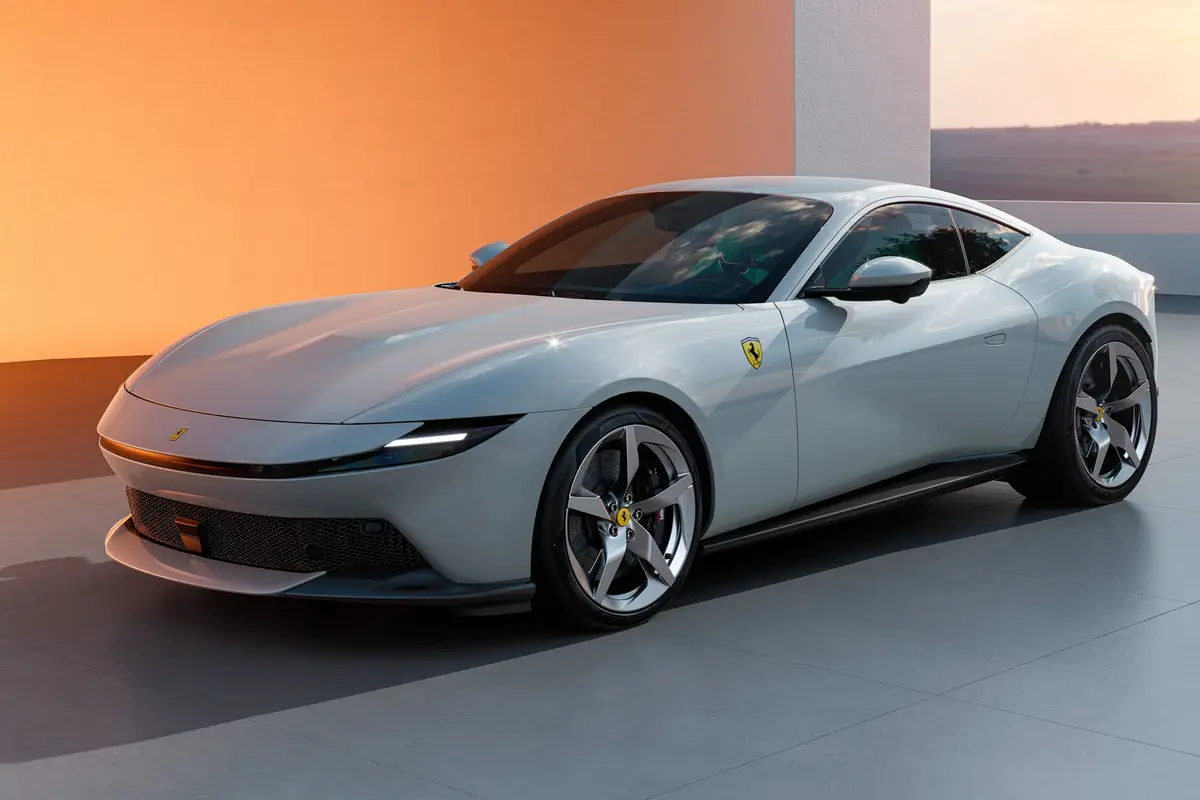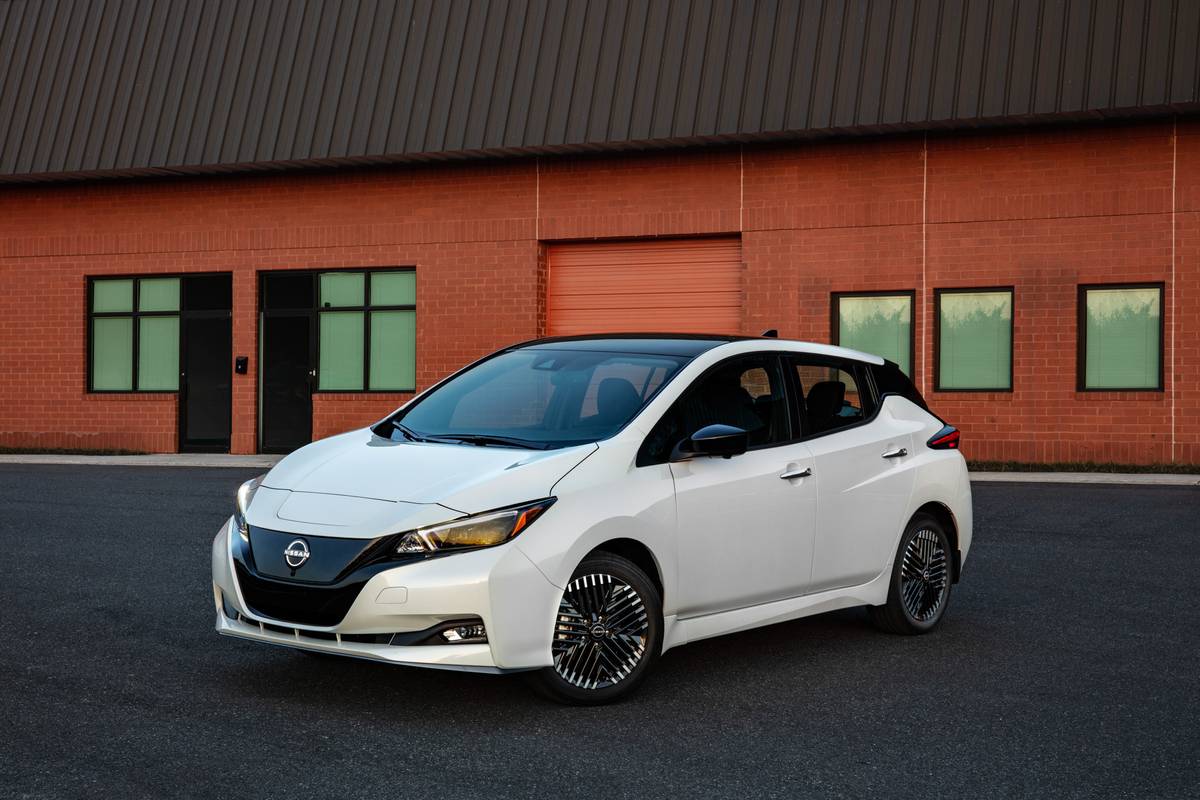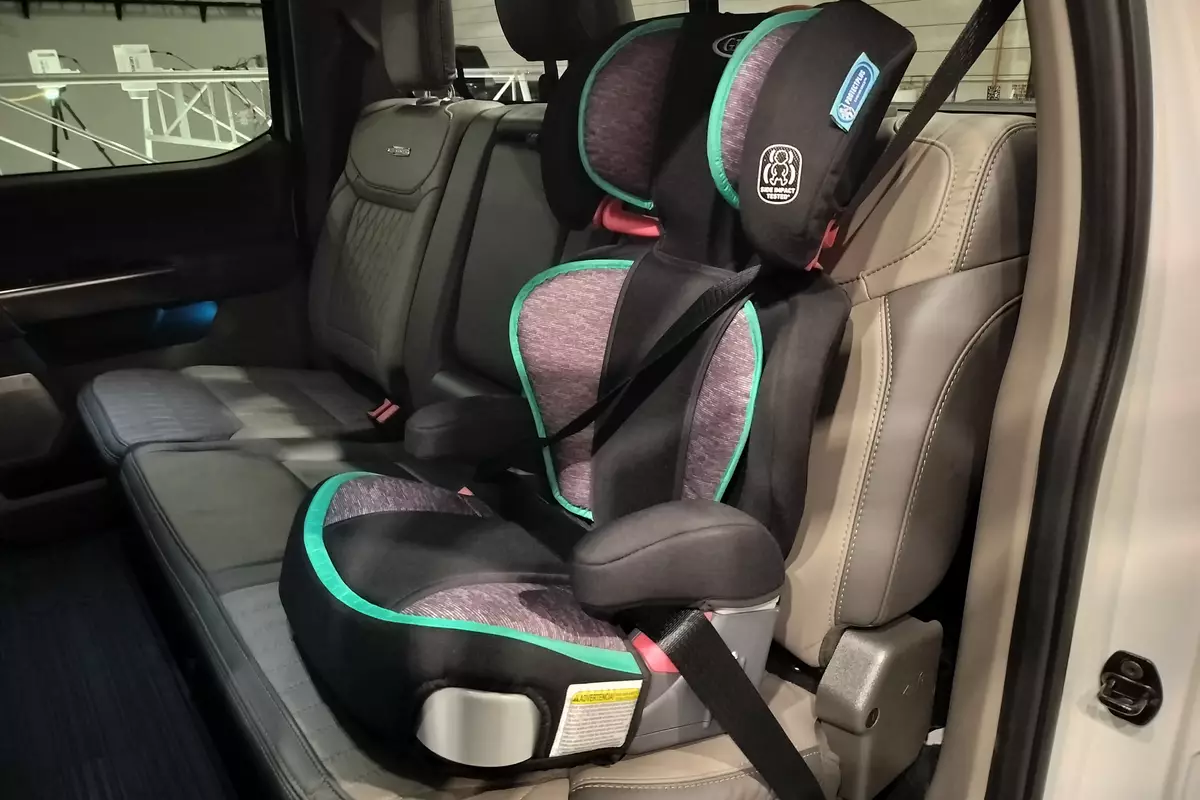2023 Honda Civic Type R Review: Fast and Not as Furious-Looking


The verdict: The 2023 Honda Civic Type R capitalizes on the benefits of the mainstream Civic’s new-for-2022 platform and retains all of what made the previous-generation Type R great, while dialing back its aggressive exterior styling.
Versus the competition: The new Type R debuts with more close competitors than its predecessor had. The Hyundai Elantra N, Toyota GR Corolla and Volkswagen Golf R are key rivals, track-focused compact cars that offer manual transmissions and horsepower ratings in the ballpark of the Civic Type R — and all of them are similarly exciting to drive.
American enthusiasts rejoiced when Honda saw fit to bring its top-performance Civic Type R model to the U.S. for the 2017 model year. Prior to that, the Civic Type R was forbidden fruit, offered in select foreign markets from 1997 but never available in North America. When the ‘17 Civic Type R finally launched here, however, its hyper-aggressive exterior styling gave many shoppers pause.
Related: 2023 Honda Civic Type R Price Clocks in at $43,990
Though it might have looked like a vehicular extra from the first three “Fast and Furious” movies, the 2017-21 Civic Type R’s outlandish, boy-racer looks covered a finely honed track machine with an astutely tuned chassis and smooth, strong turbocharged four-cylinder engine. The Type R offered racetrack-ready performance with a livable character in everyday driving, and even came with a few upscale interior touches that gave it a classier vibe than your everyday Civic.
The Type R took a one-year breather when the Civic was redesigned for the 2022 model year, and it returns on the car’s new platform for 2023. The basic concept stays the same: front-wheel drive, a four-door hatchback body style and lots of high-performance hardware. At Honda’s invitation, I drove the new Civic Type R on the road in California’s Napa Valley area and briefly on the track at Sonoma Raceway. (Per our ethics policy, Cars.com pays for its own airfare and lodging when attending such manufacturer-sponsored events.)

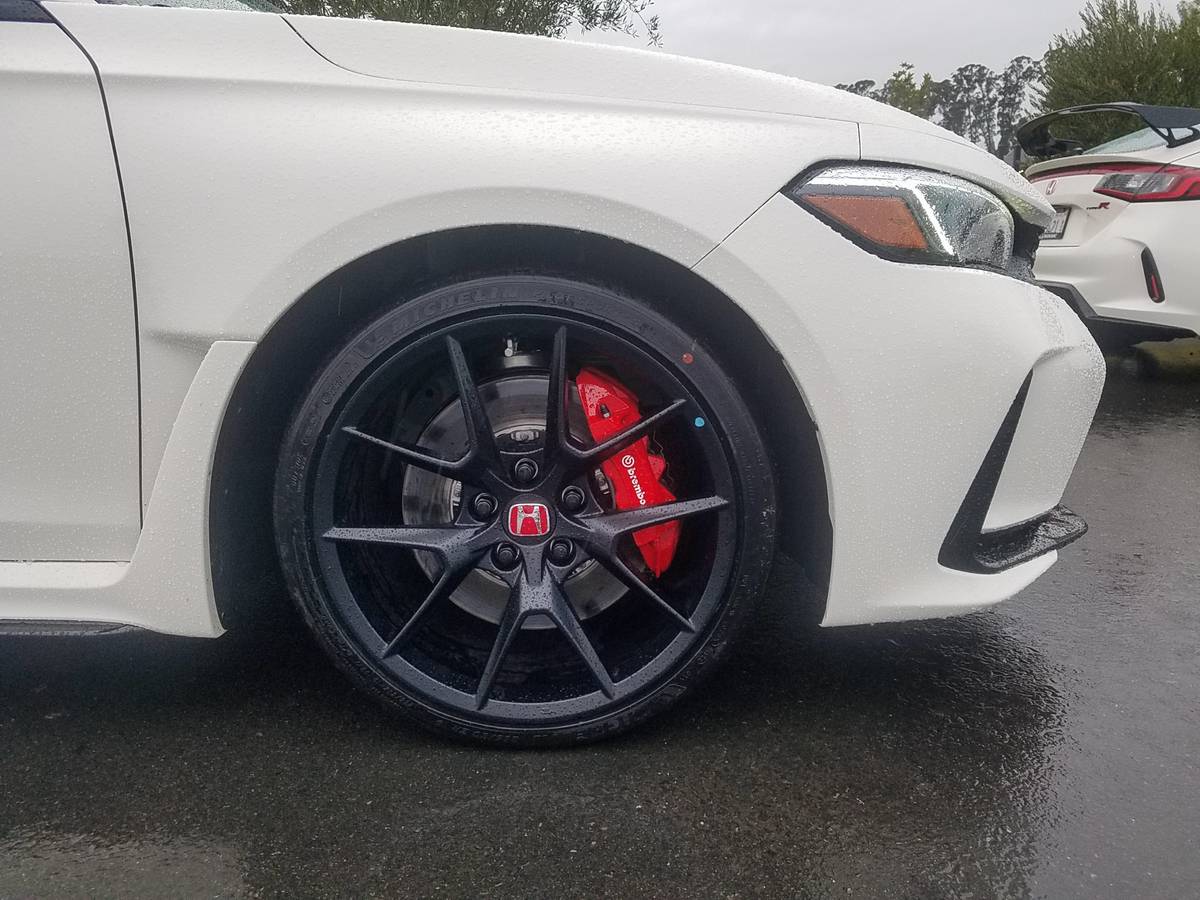



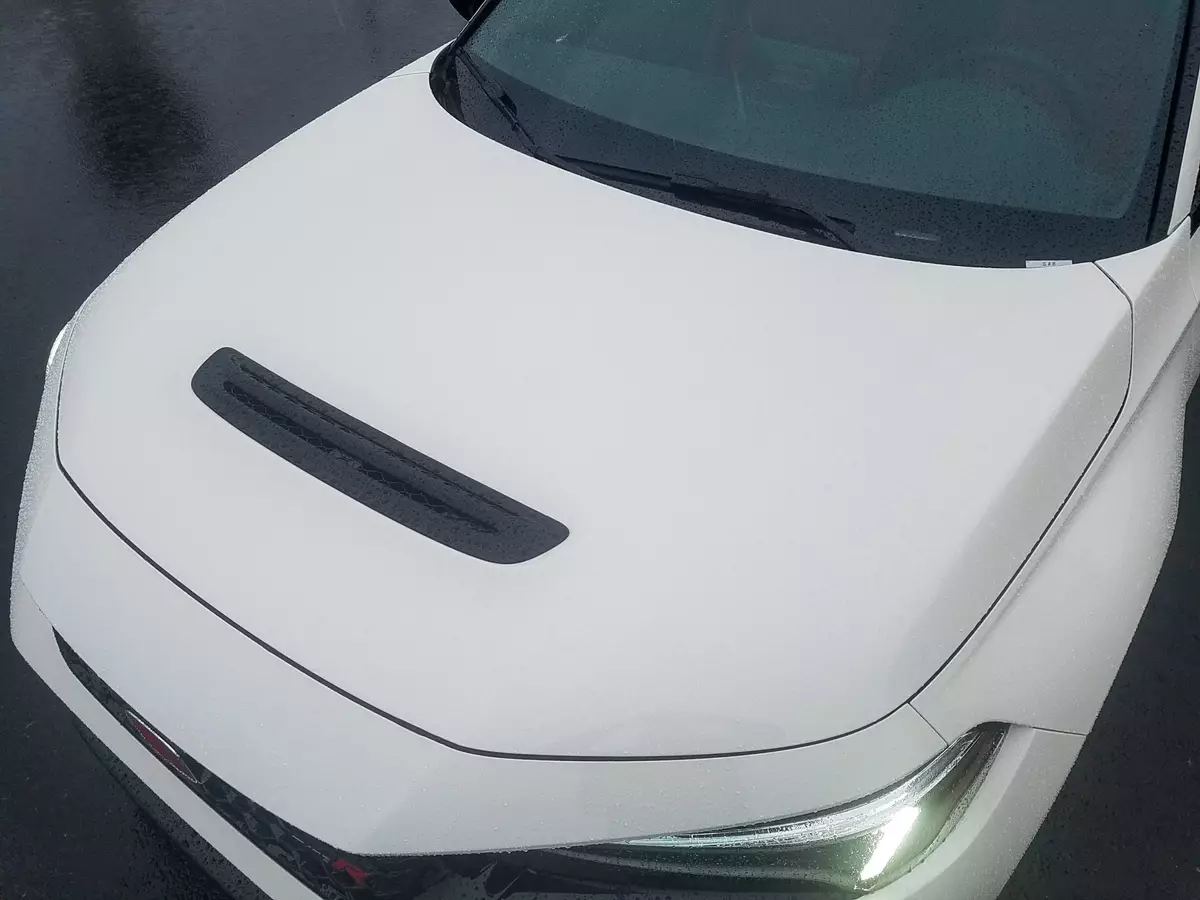
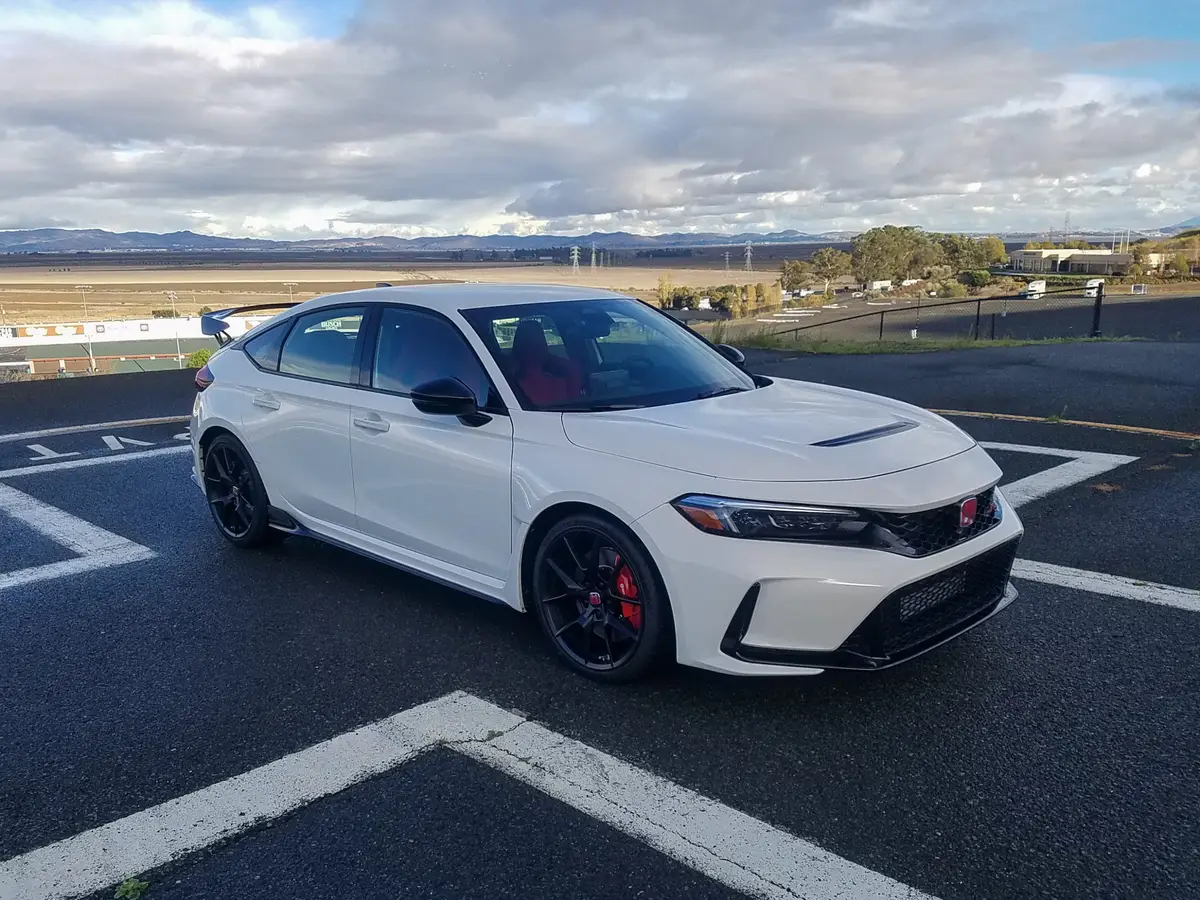

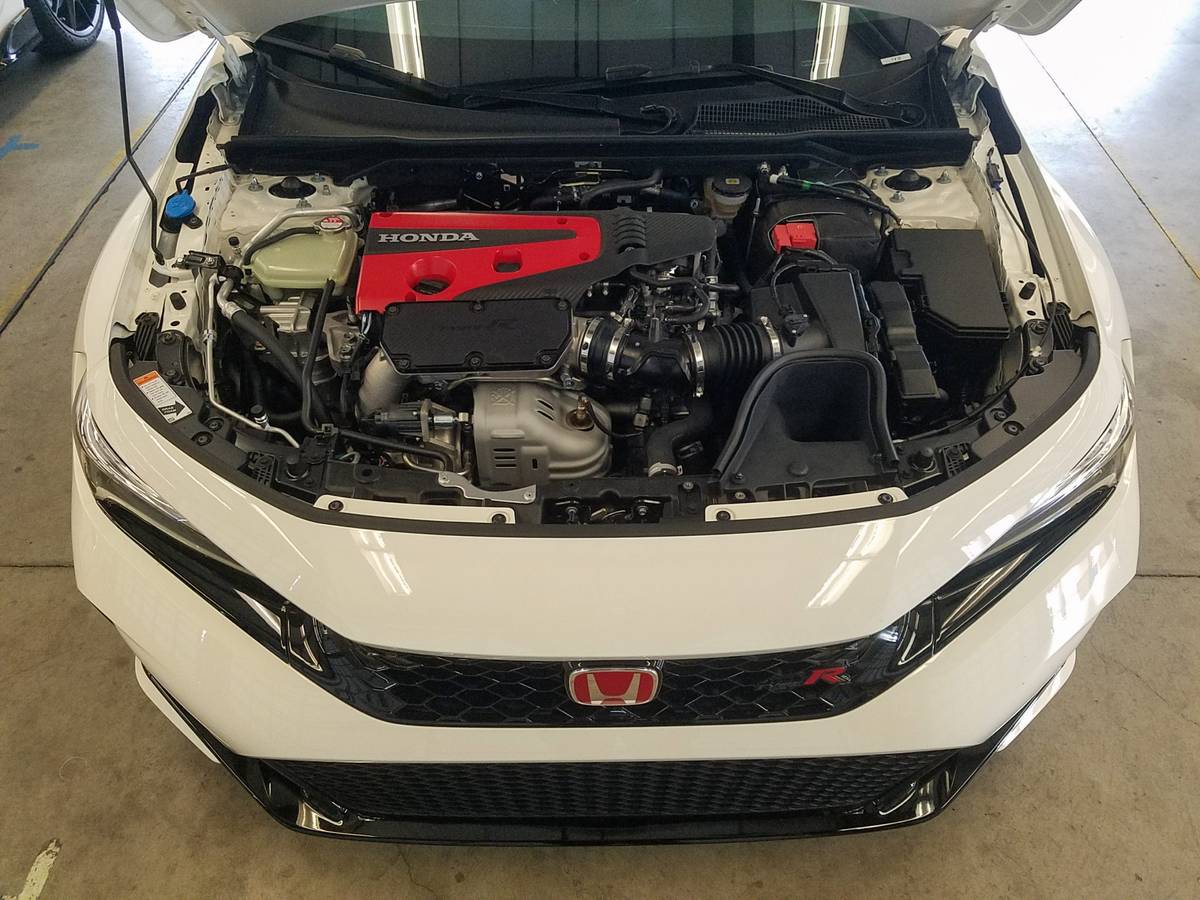

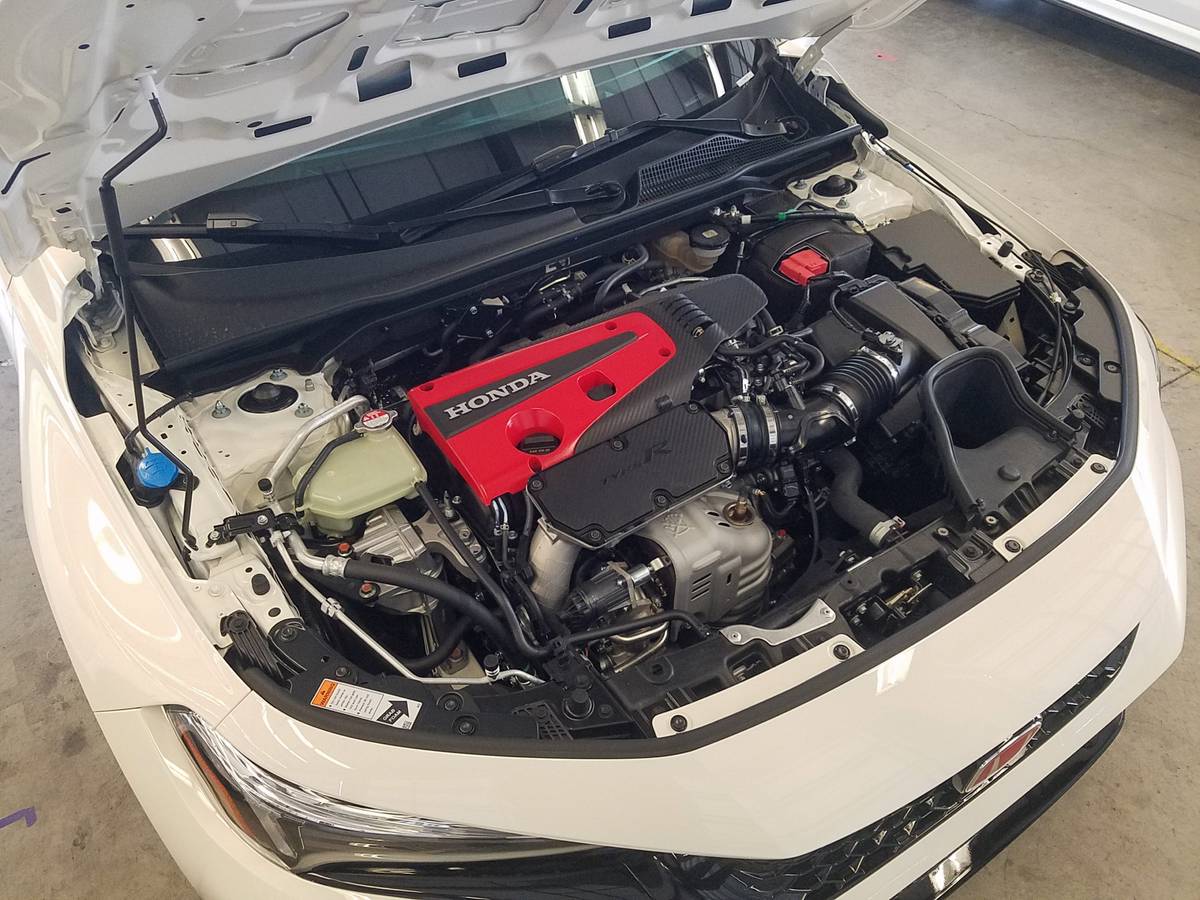

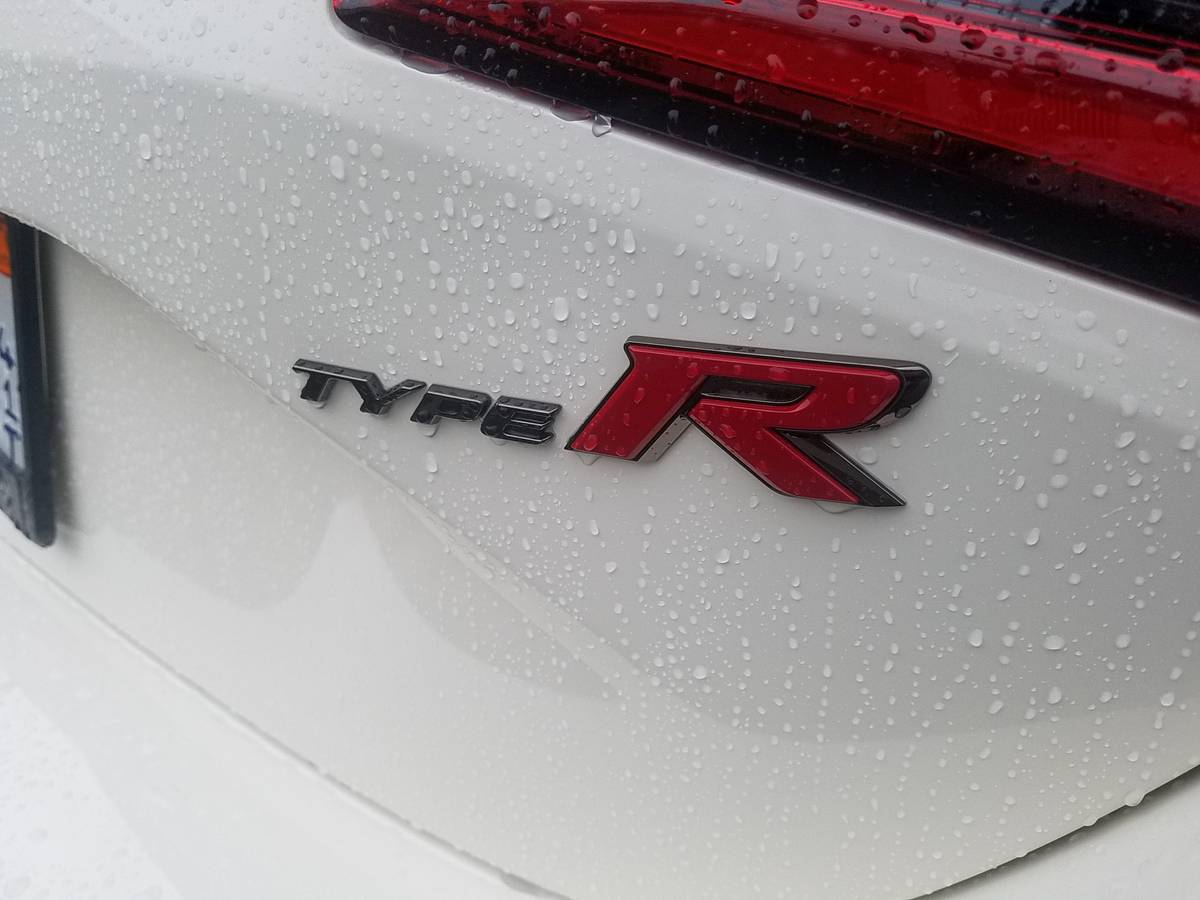















Upgrades Under the Hood
Like the previous-gen Civic Type R, the new one is powered by Honda’s K20C1 turbo 2.0-liter four-cylinder, but the engine gets a few noteworthy upgrades. The turbocharger is new, the air intake flow rate has been increased, and a new active-valve exhaust system increases exhaust flow by 13% over the previous-gen Type R. The result is 315 horsepower at 6,500 rpm and 310 pounds-feet of torque from 2,600-4,000 rpm (improvements of 9 hp and 15 pounds-feet over the previous Type R). Engine cooling has also been improved via a larger front bumper opening, larger radiator and larger-diameter cooling fan.
As before, the engine is paired exclusively with a six-speed manual transmission — an automatic is not offered. Honda says the flywheel is 18% lighter than before, reducing rotational inertia, sharpening engine response and enabling quicker engine rev matching from the automatic rev-matching system.
Girded Loins
The basic Civic body structure receives a few rigidity-improving measures for Type R duty. Honda says it used 3.8 times more structural adhesives in critical areas and implemented structural enhancements in various components of the body and chassis architecture.
The car’s track is 1 inch wider in front and 0.75 inch wider in back than the previous Type R, and the wheels and tires are a bit wider, as well: lightweight 19-inch alloys fitted with unique Michelin Pilot Sport 4S P265/30R19 tires. (Honda Performance 19-inch forged-alloy wheels and track-focused Michelin Pilot Sport Cup 2 tires are available accessories.) The brakes have been upgraded to Brembo 13.8-inch two-piece rotors with four-piston calipers up front and 12-inch rotors in back. Honda says brake cooling has been improved through increased airflow through the front end.
Handling-focused suspension revisions include stiffer spring rates and larger, stiffer stabilizer bars front and rear. An adaptive suspension system automatically adjusts damping based on driving conditions and drive-mode selection.
On Track and Street
Uncharacteristically rainy weather in California on the day of the press event meant we were unable to push the Type R close to its limits at Sonoma Raceway, but we nonetheless got a decent sampling of its capabilities. Though wet pavement occasionally showcased the traction limitations of pushing 315 hp through the front wheels, the Type R is a ferociously capable cornerer and tenacious performer all around that remains livable in street driving despite its track-focused enhancements.
The Type R has four driver-selectable modes (Comfort, Sport, Plus R and a customizable Individual setting) that alter engine response, steering assist, suspension damping, engine sound, rev-match speed and the digital gauge cluster. In Comfort mode, the suspension is acceptably compliant over rough pavement and most bumps. The Plus R mode is best reserved for racetracks and pristine roads; it significantly stiffens the suspension and amplifies the car’s snarky character. In any driving mode, the brakes supply impressive, confidence-inspiring stopping power.
High-performance turbocharged four-cylinders aren’t typically low-end torque monsters — they need higher engine rpm for the turbocharger to spool up and provide boost for truly strong acceleration. By these standards, the Type R does exceptionally well: It pulls smoothly and strongly from relatively low rpm, and the turbo’s boost arrives in a steady, predictable-but-still-exciting fashion, accompanied by a raspy snarl from the exhaust that’s music to enthusiast ears.
The manual transmission is also a delight. It’s agreeable and easy to use thanks to a smooth, progressive clutch pedal and an excellent short-throw shifter with a precise, mechanical action. However, I wasn’t thrilled with the egg-shaped shift knob — the more traditional ball-shaped knob of the previous Type R felt more natural in my hand and easier to grip firmly. Honda offers an accessory leather-wrapped shift knob; I might opt for that instead.
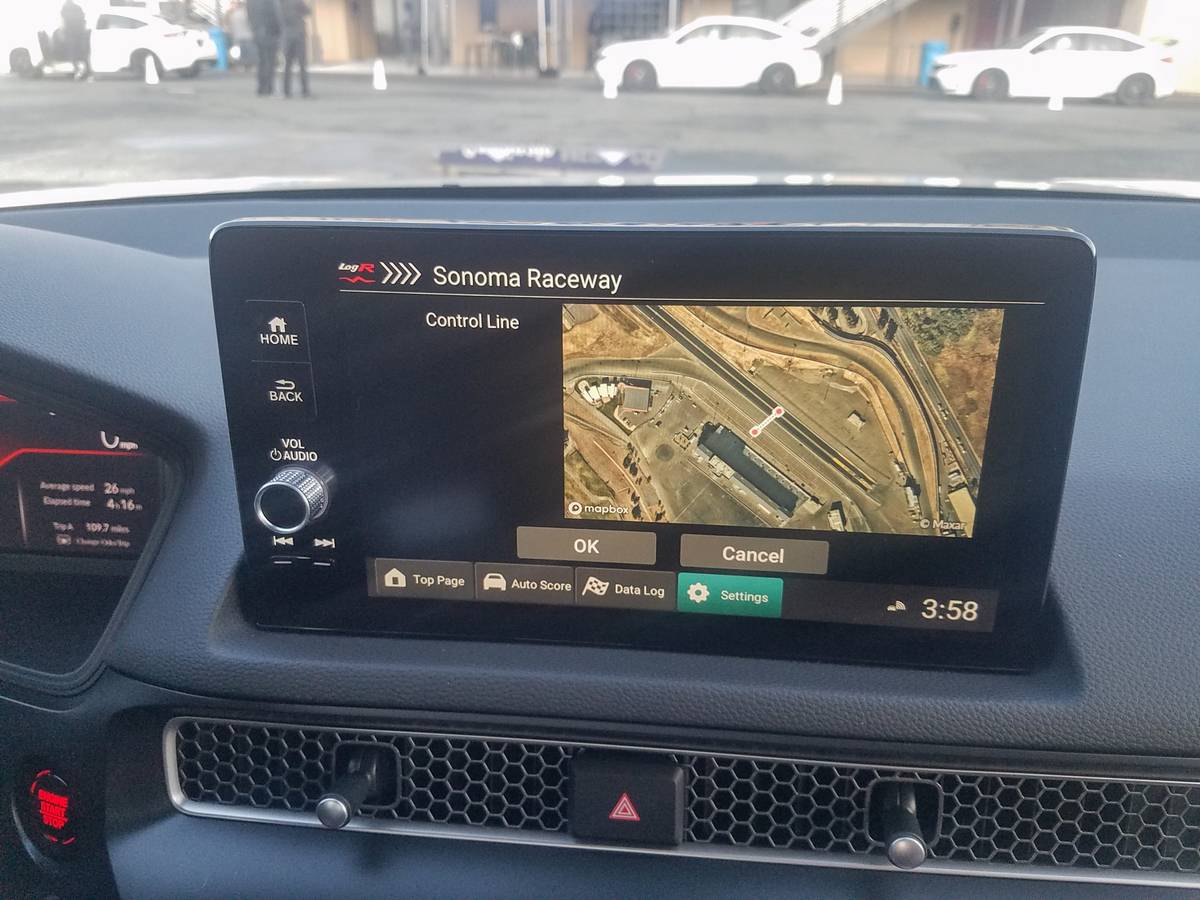
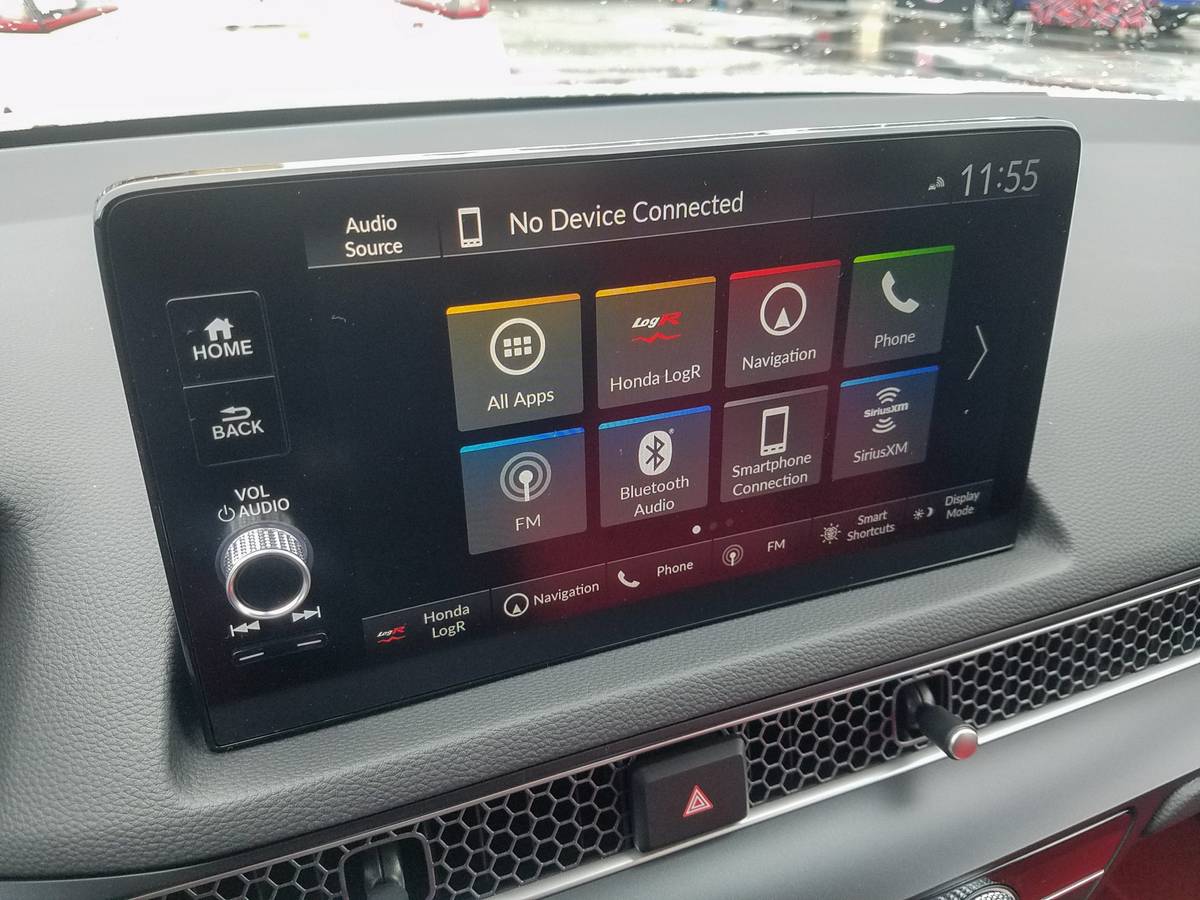
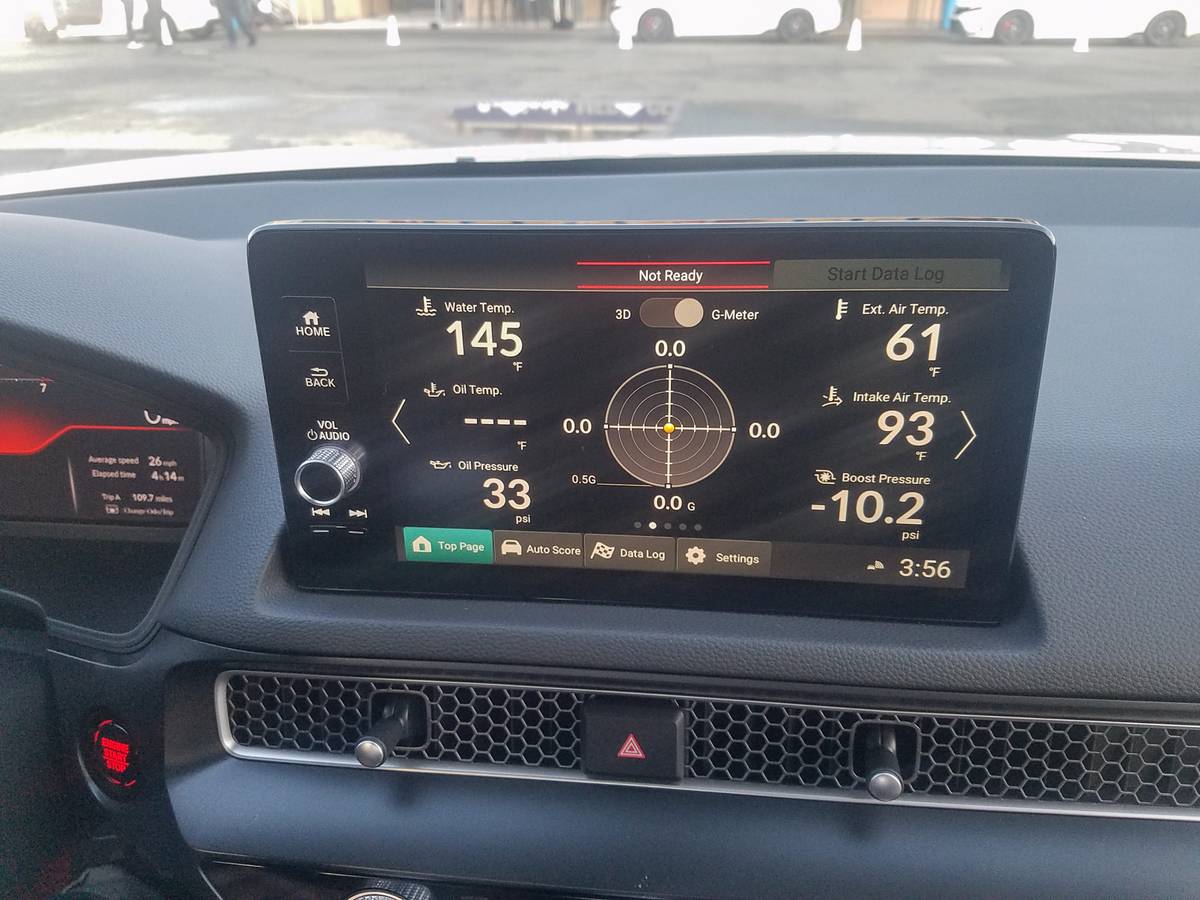
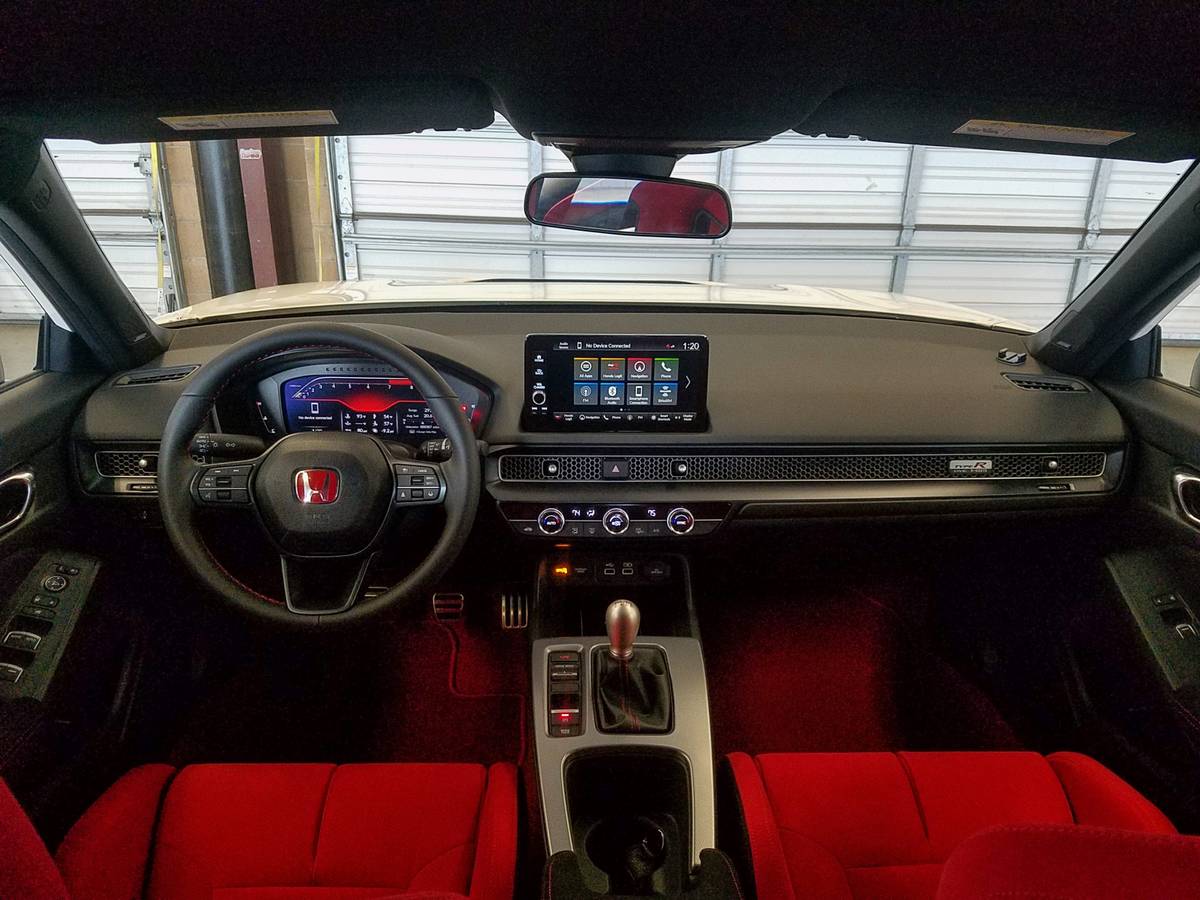
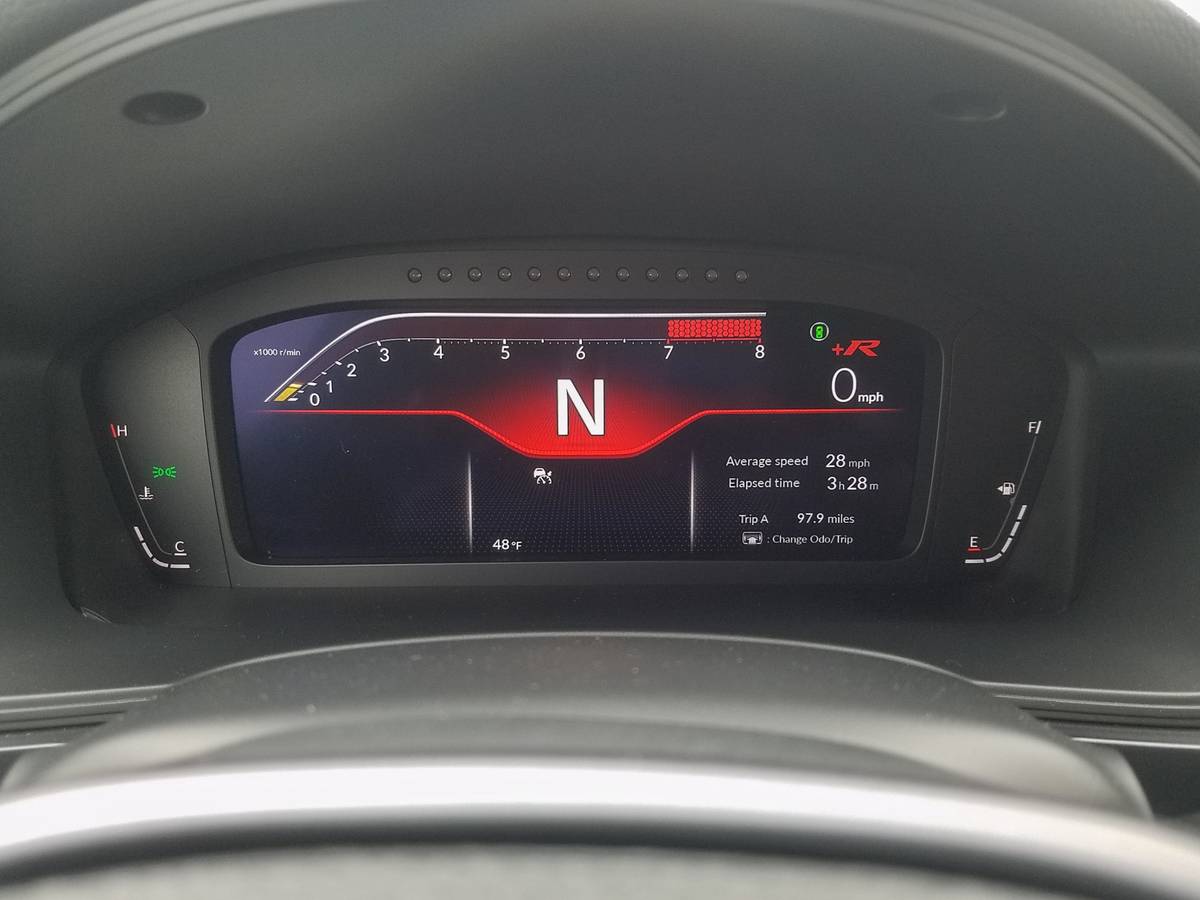
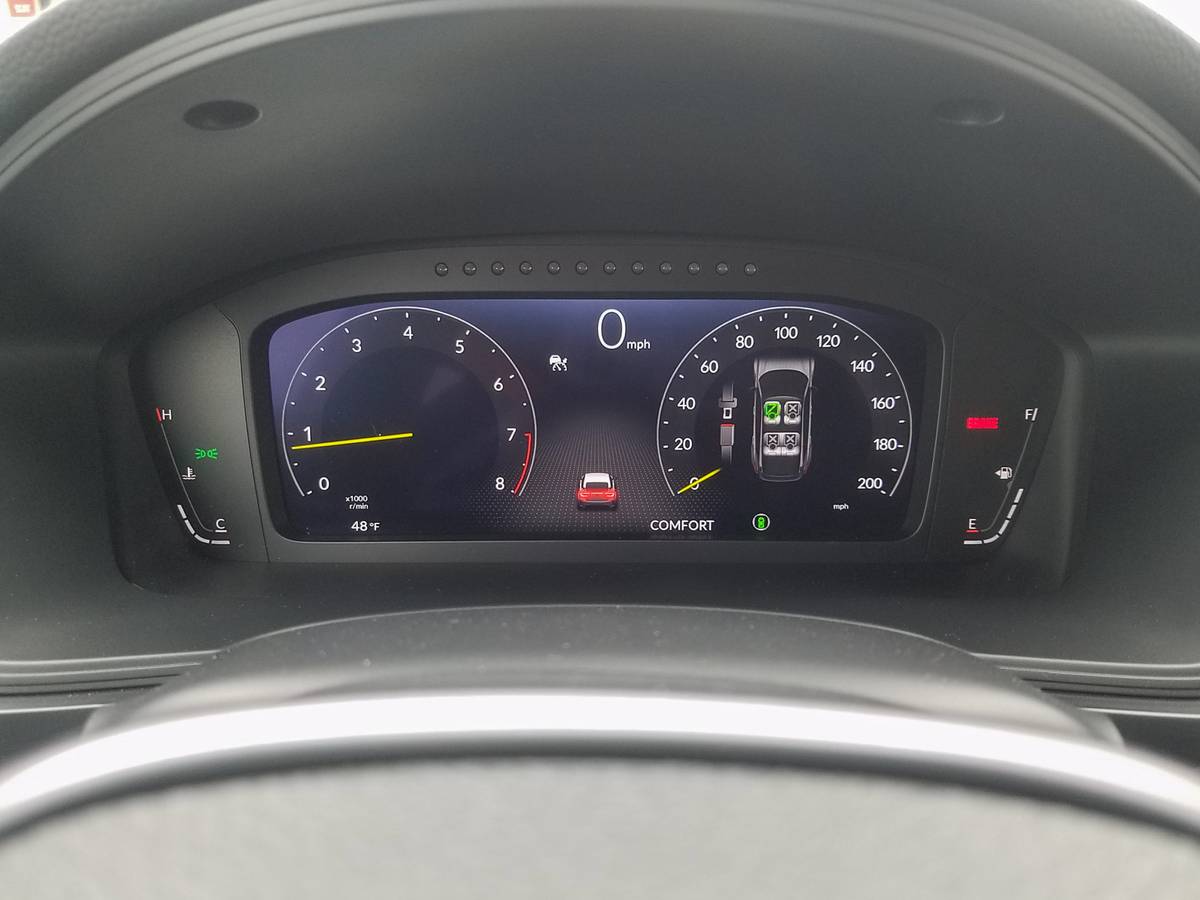
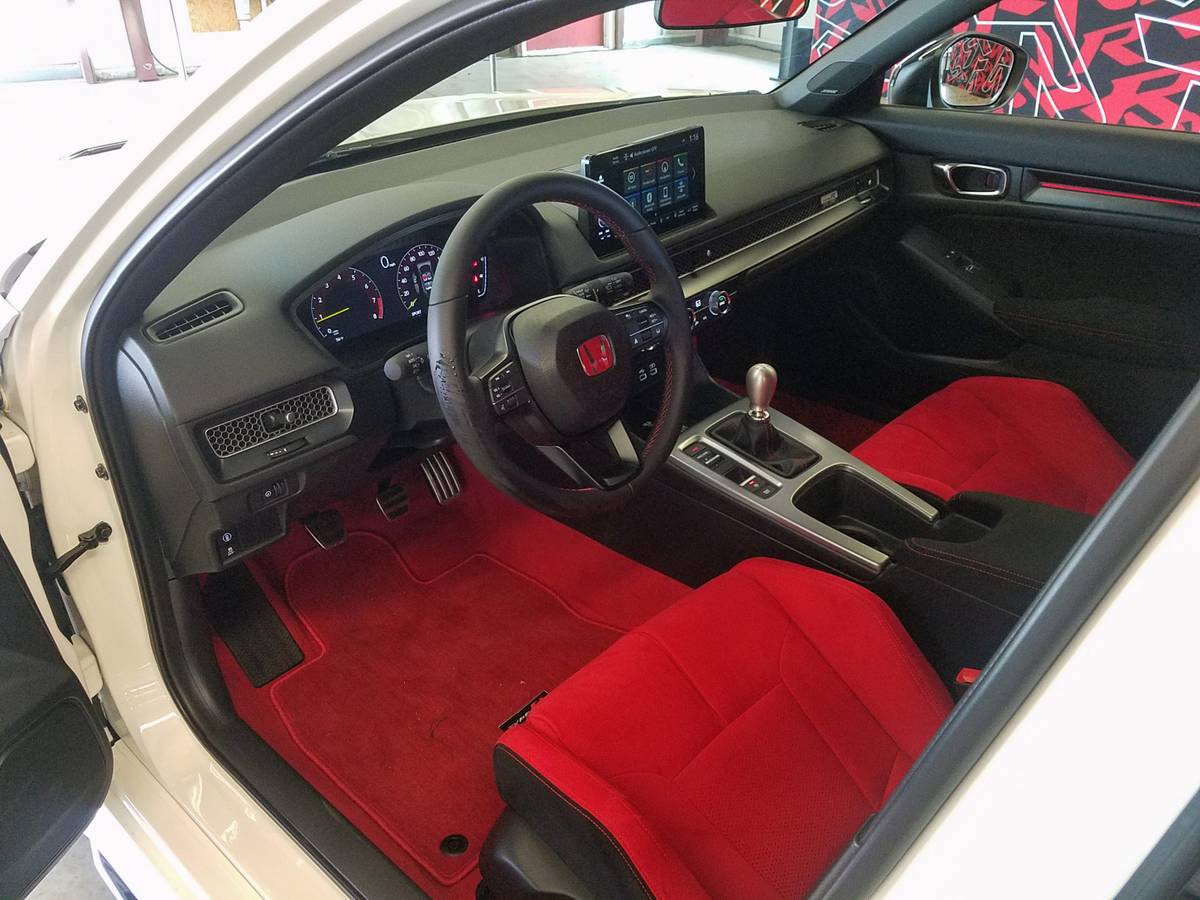
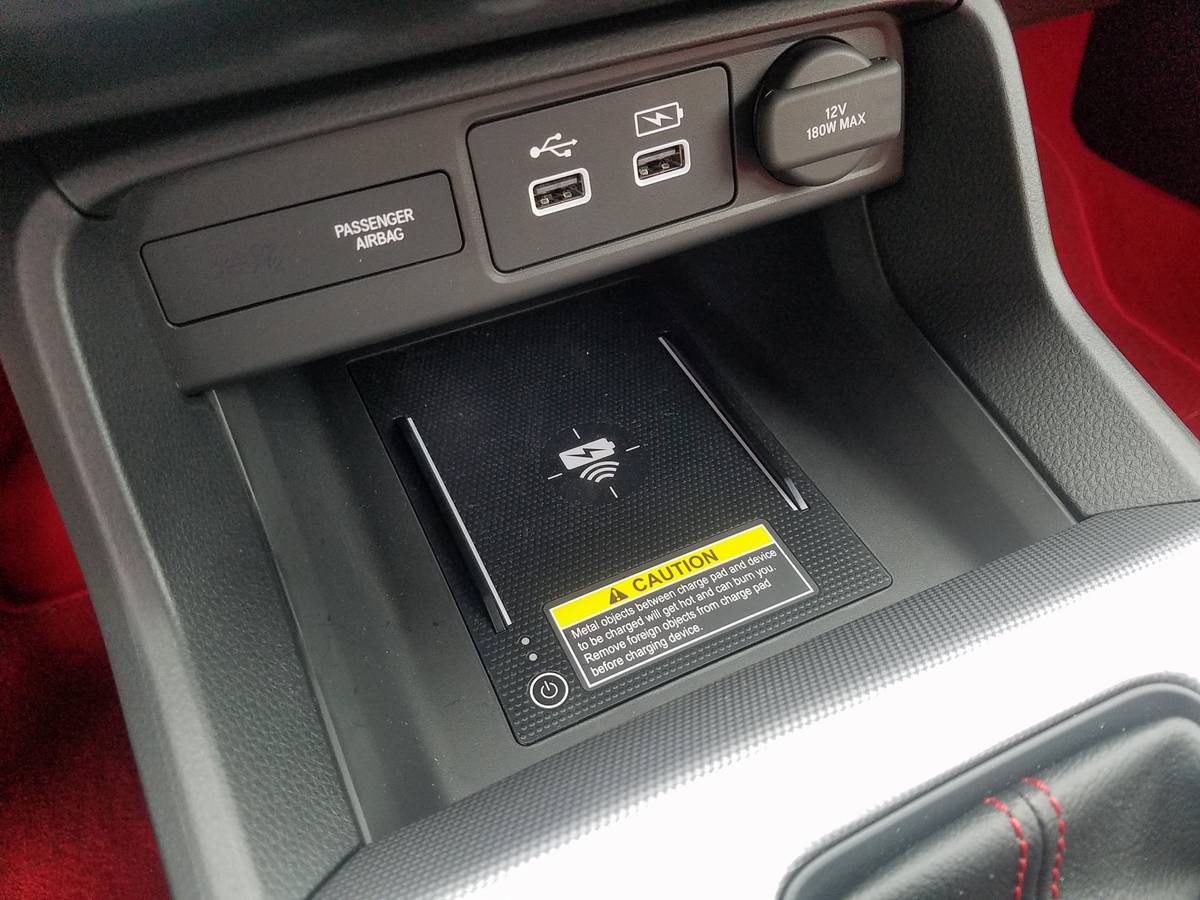
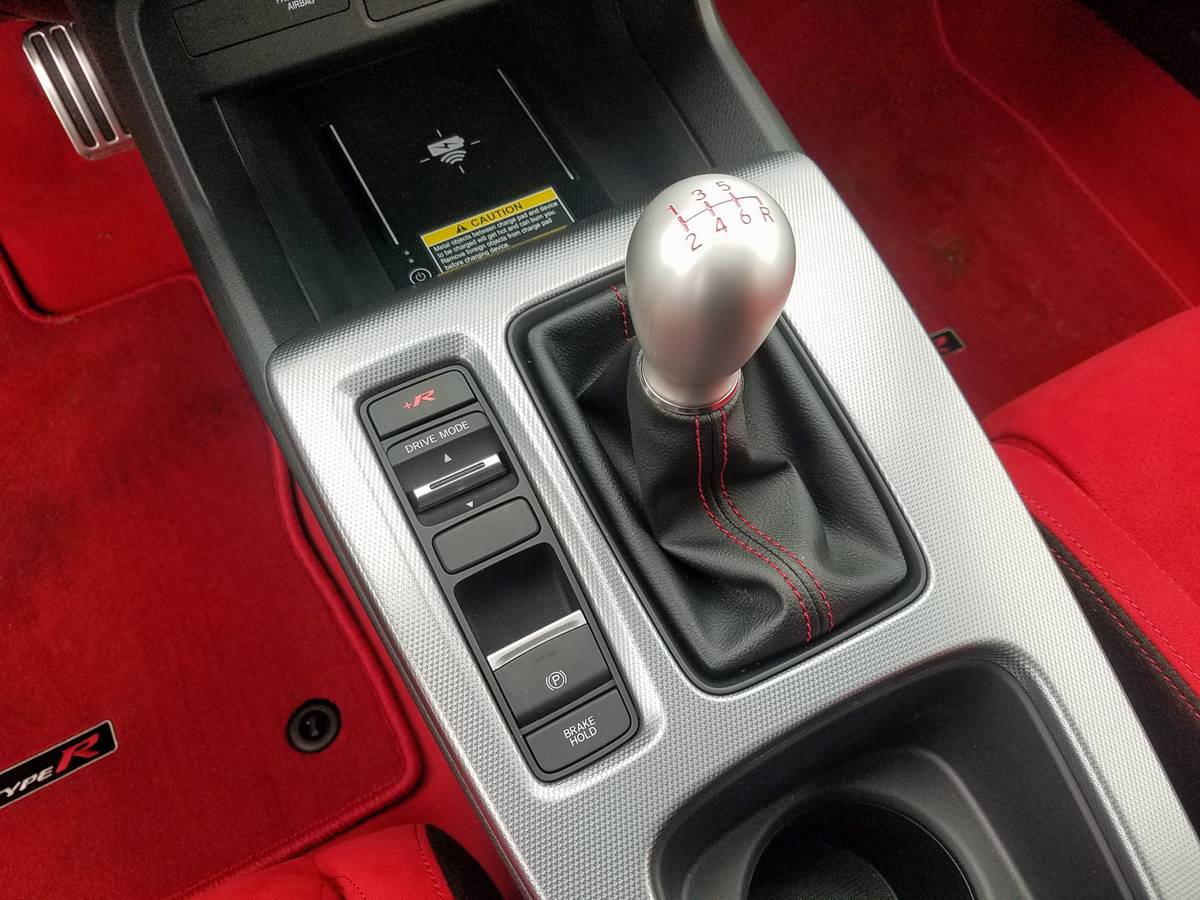
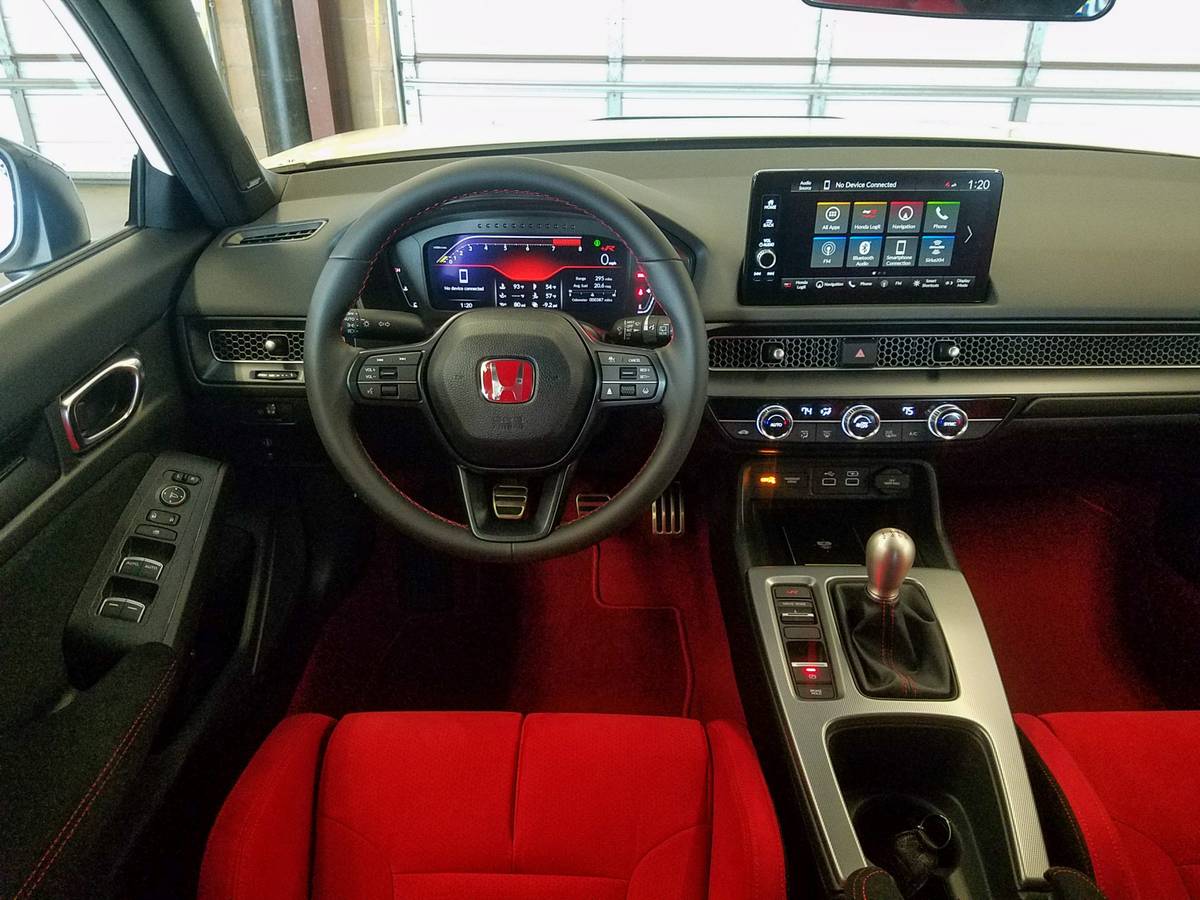
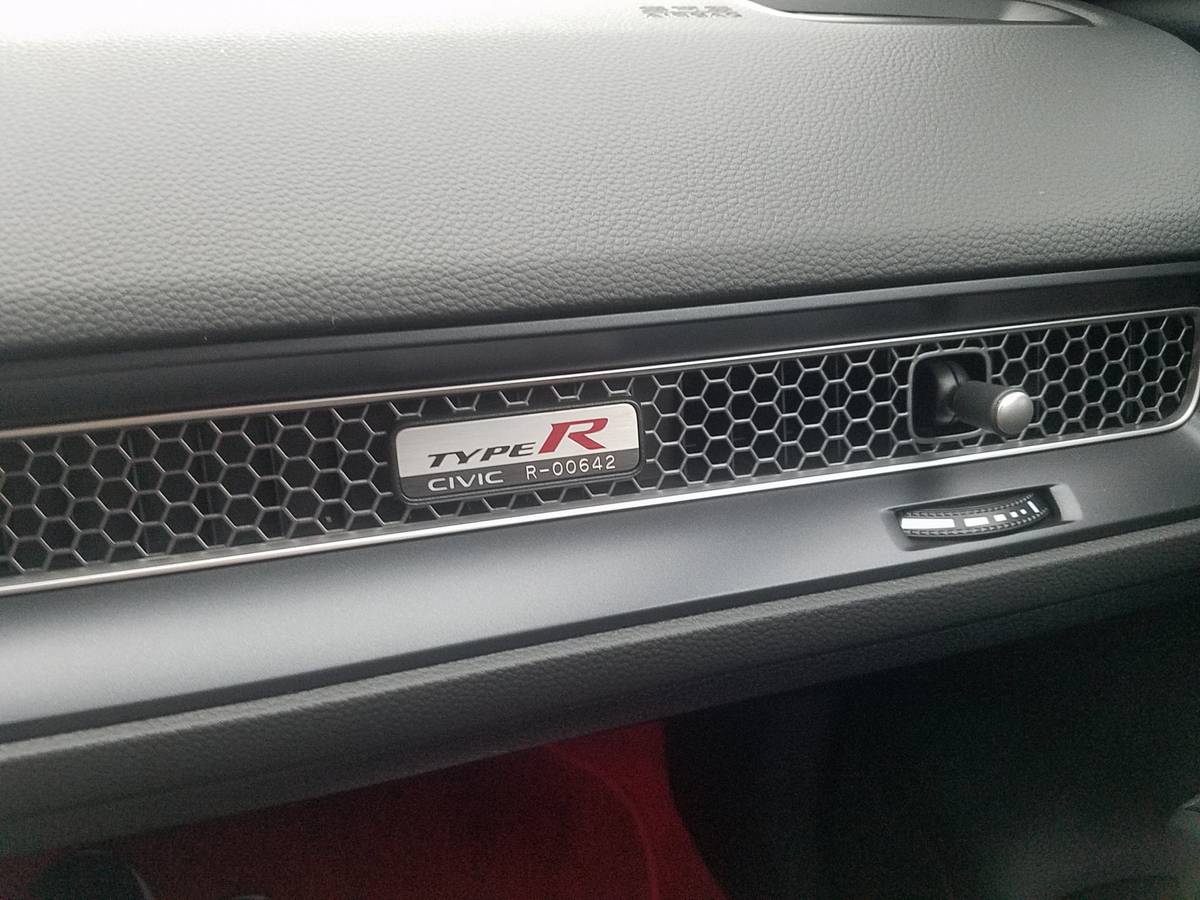
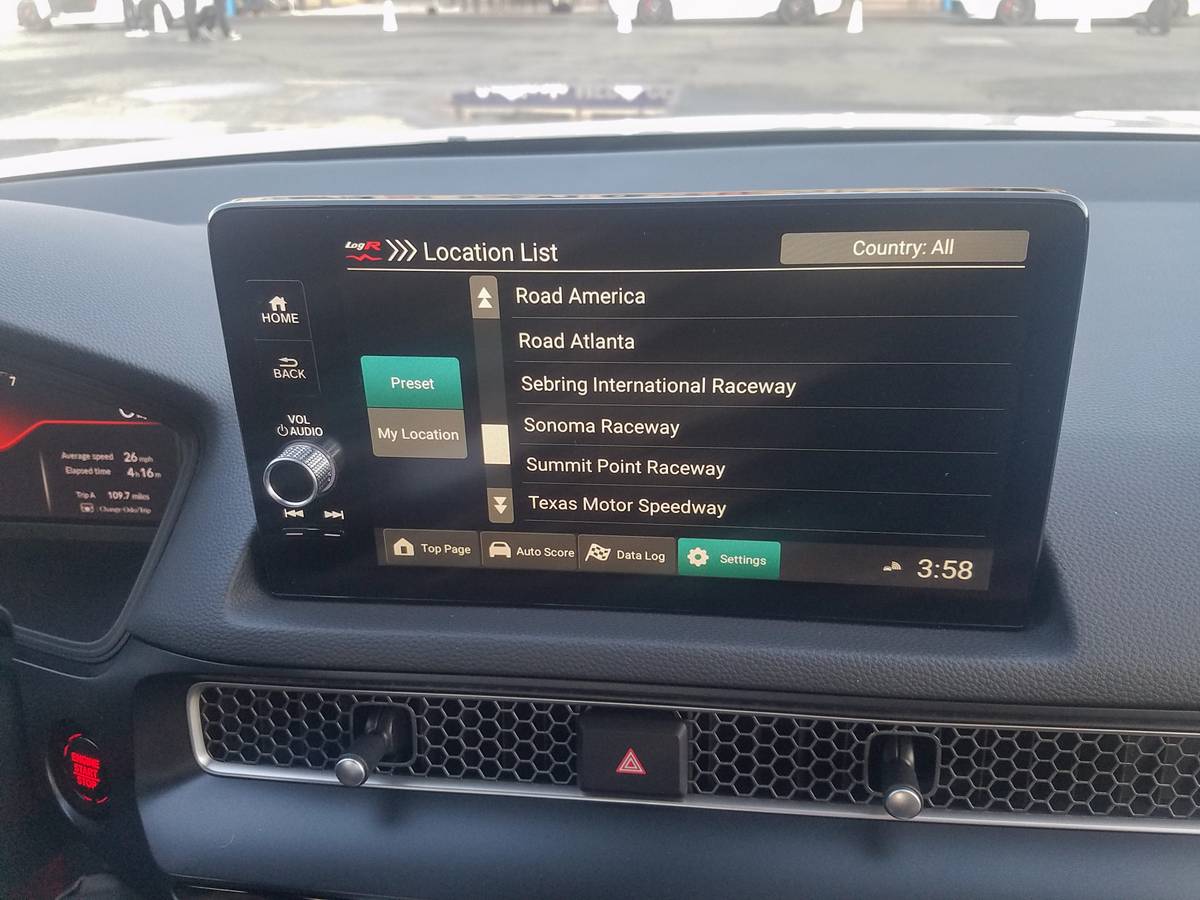












Selecting the Plus R drive mode switches the digital gauge panel from traditional analog-style tachometer and speedometer dials to a racecar-style display with a horizontal tach and a prominent gear-position readout. There are also separate shift-indicator lights above the gauge cluster that illuminate progressively as the engine nears its redline. When it’s time to downshift, the rev-matching system automatically blips the throttle for smooth gear changes. (You can turn this feature off if you’re better at heel-and-toe shifting than I am.)
Speaking of performance displays, the Type R’s updated LogR Performance Datalogger system should delight the track-rat crowd. It’s now a stand-alone app (no smartphone is required) and boasts a plethora of digital gauges, including a G-meter display, engine oil temperature and pressure, intake air temperature, turbo boost pressure, steering angle and accelerator opening angle, to name a few. Also included are a stopwatch for recording lap times, integrated track maps for notable race courses across the country and even an “Auto Score” function that generates a driver score based on the smoothness of their acceleration, braking and steering.
Seeing Red Inside
The Type R’s interior gets several performance-themed trim touches, such as red carpeting, contrast stitching and seat belts; faux suede upholstery on the front seats, door panel inserts and center console armrest; aluminum pedals; and a serial-numbered Type R badge on the dash. The main upgrades are the aforementioned short-throw shifter and a pair of sport front seats with pronounced bolsters and dual belt pass-throughs (for aftermarket racing-style harnesses). The previous-gen Type R’s front seats struck a near-ideal balance between snugness and support for aggressive driving on a racetrack and livable comfort for everyday driving and longer trips. The new seats offer a similar mix of comfort and support, though they’re a bit tighter on my backside than I remember the previous Type R’s seats being.
Those pronounced seat bolsters complicate entry and exit a bit since you can’t slide over them easily. The Civic also has a fairly low driving position for a mainstream compact car. This enhances the high-performance feel of the Type R but necessitates a deeper drop into the seats and a higher climb out than you might expect. The seats don’t offer any lumbar adjustments or heating, and the integrated head restraints aren’t adjustable.


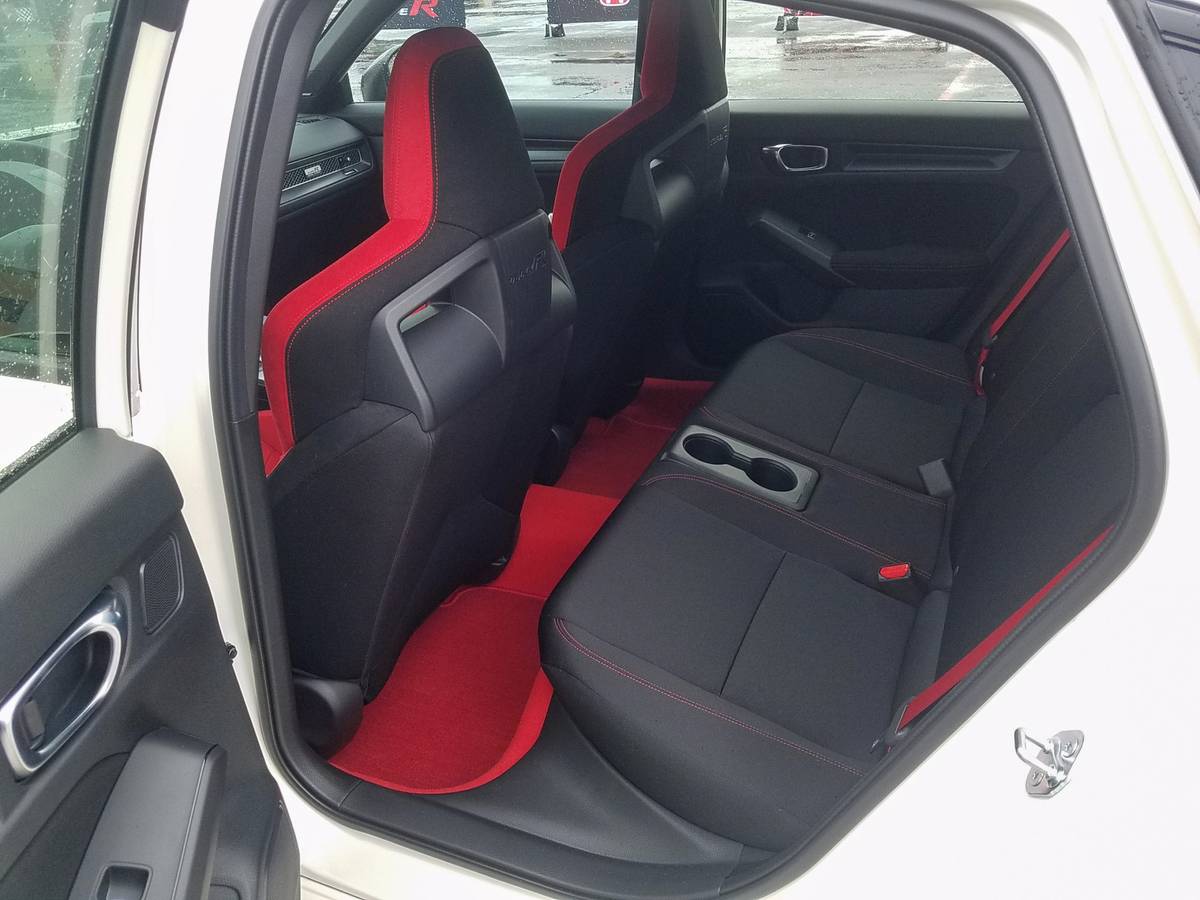
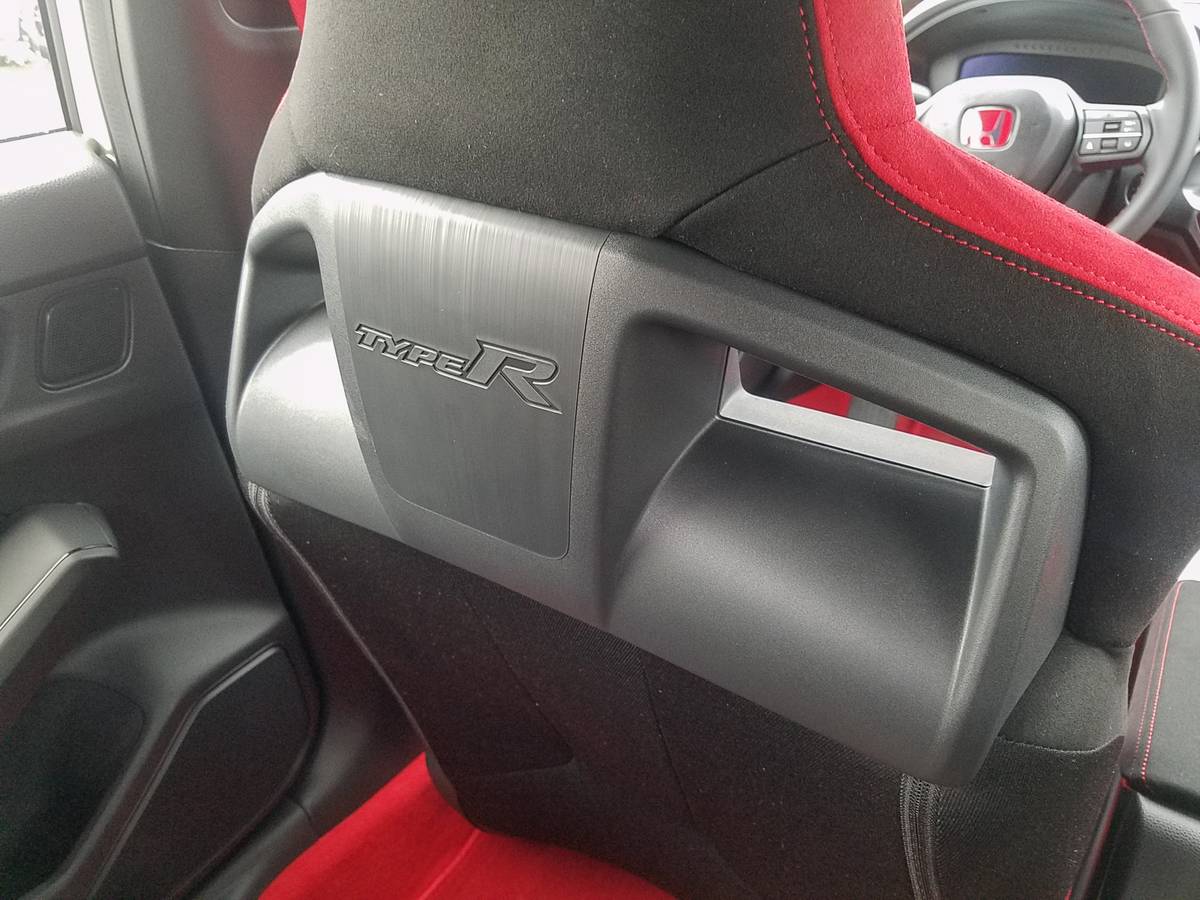
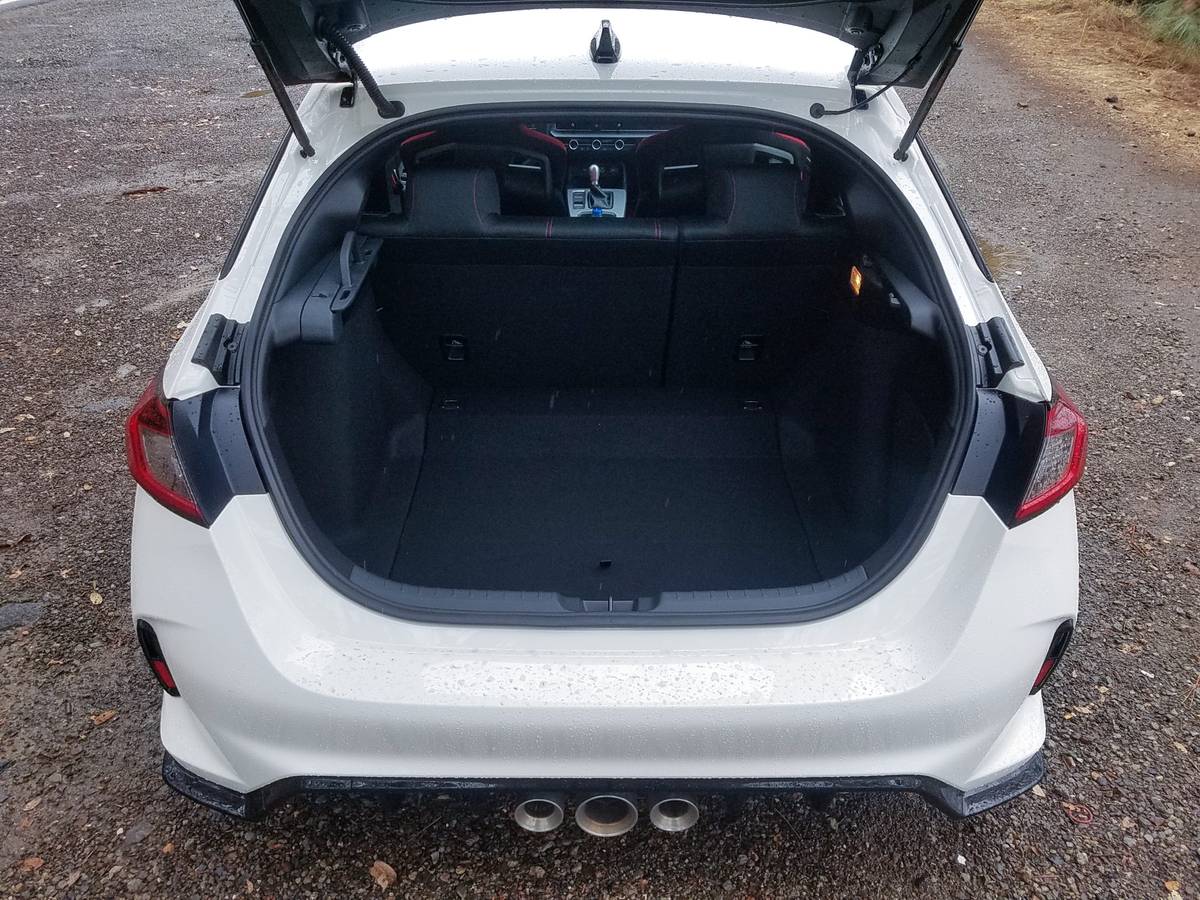

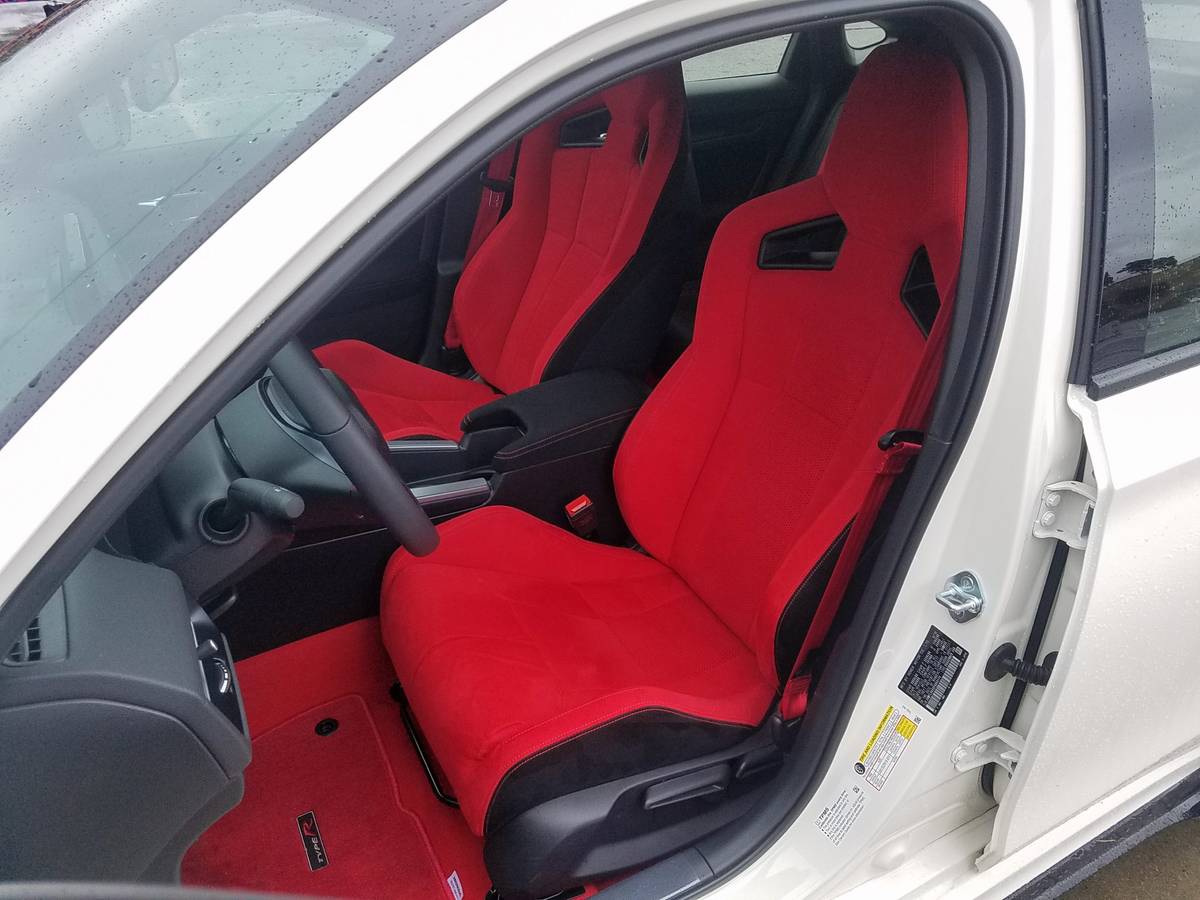
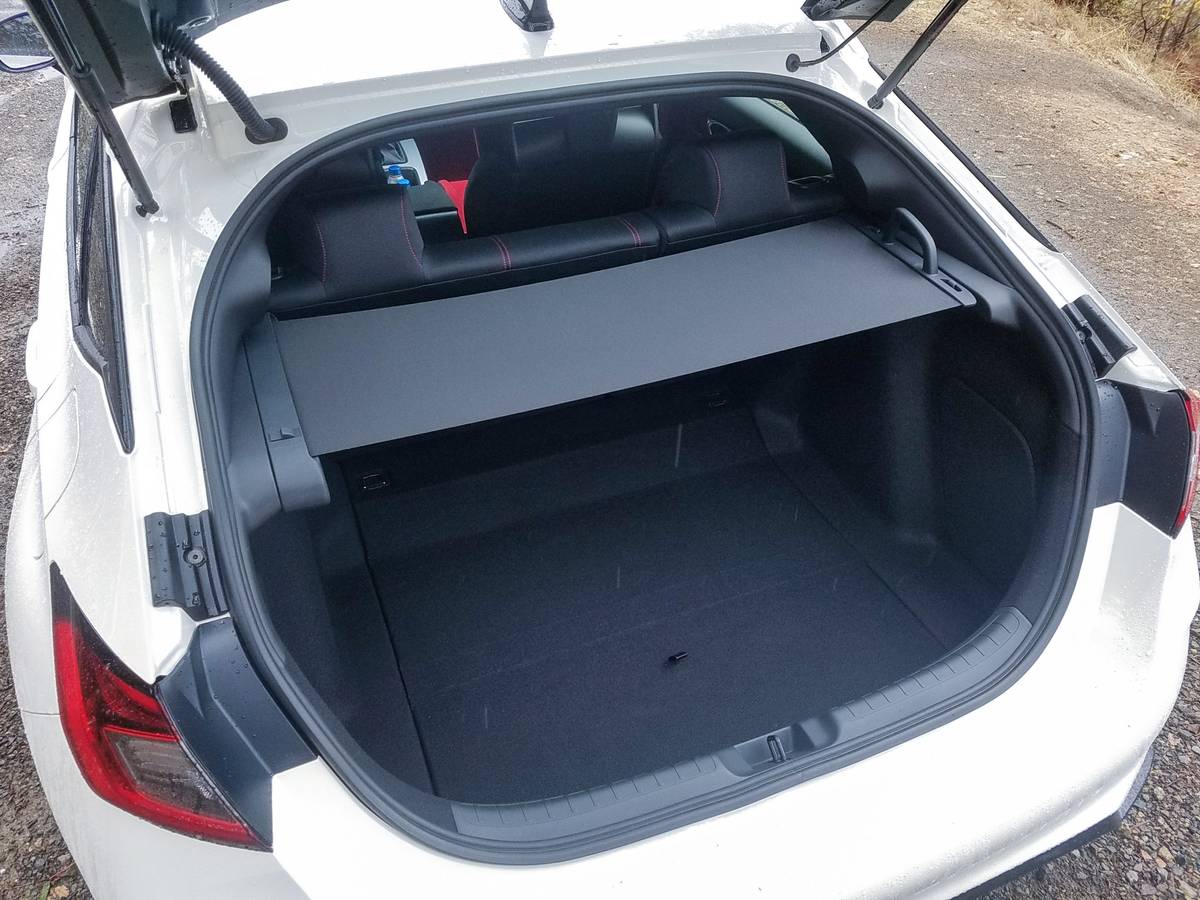








Compared to the front seats, the Type R’s rear seats feel very much like an afterthought. Not only do they not get the same flashy red upholstery — they’re covered in plain old black cloth, jazzed up only by the red seat belts and a bit of red contrast stitching — they make do with a plastic dual cupholder insert plunked right in the middle of the bottom cushion. There’s no flip-down rear armrest and no provision for a middle rear-seat passenger.
Practical Considerations
One of the nice things about the Civic Type R is simply that it’s a Honda Civic hatchback — a spacious, practical compact car that boasts a rear seat that can comfortably accommodate average-sized adult passengers and a versatile cargo area that offers space on par with (or more than) many subcompact SUVs.
The Type R also benefits from the improvements of the new-for-2022 Civic. The thinner, more upright windshield pillars and door-mounted side mirrors are visibility aids especially beneficial in high-performance driving. The standard Bose premium audio system sounds great, the Honda Sensing suite of active-safety features gets welcome updates including a new camera that can see farther and has a wider field of view, and the Type R now comes with blind spot warning and traffic sign recognition.
Boy Racer Begone (Mostly)
Honda has dialed back on the outlandish styling of the old Type R, but there’s still plenty to differentiate it from an Si or other mainstream Civic. In fact, other than the front doors, roof and hatchback liftgate, the Type R’s body panels and add-on components are unique, aimed at improving aerodynamic and cooling performance or increasing downforce for better high-speed stability.
The gaping front end sports a honeycomb-pattern grille and ducts for brake cooling. The hood is made of aluminum for weight savings, and it has a large vent for dissipating radiator heat and minimizing airflow resistance. Wider, flared front and rear fenders cover the wider tires. Unlike the previous-gen Type R, which wore separate rear fender flares that looked a bit tacked on, the new Type R has rear fenders with integrated flares. The rear doors are unique to the Type R, as well, flaring out to meet the wider rear fenders for a smoother, more cohesive look that Honda says also aids aerodynamics.
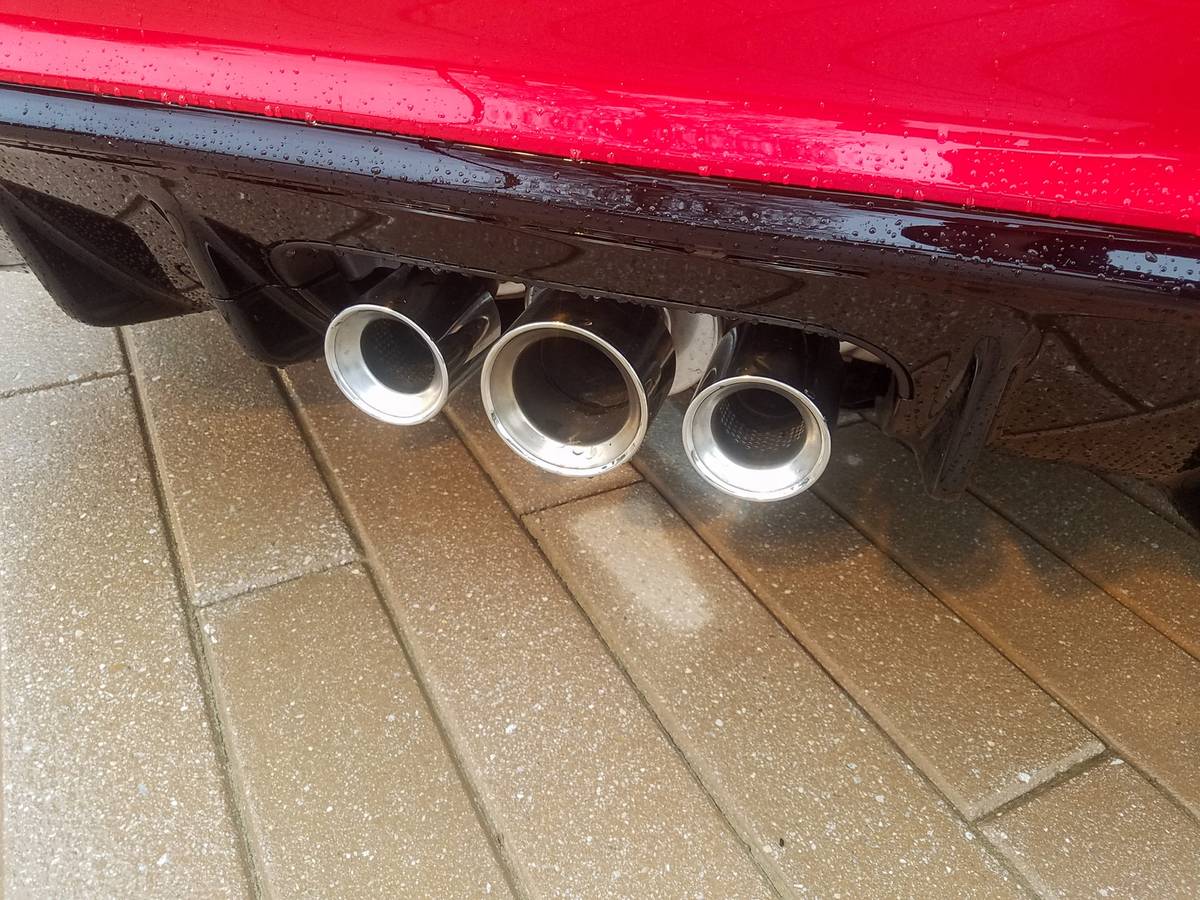
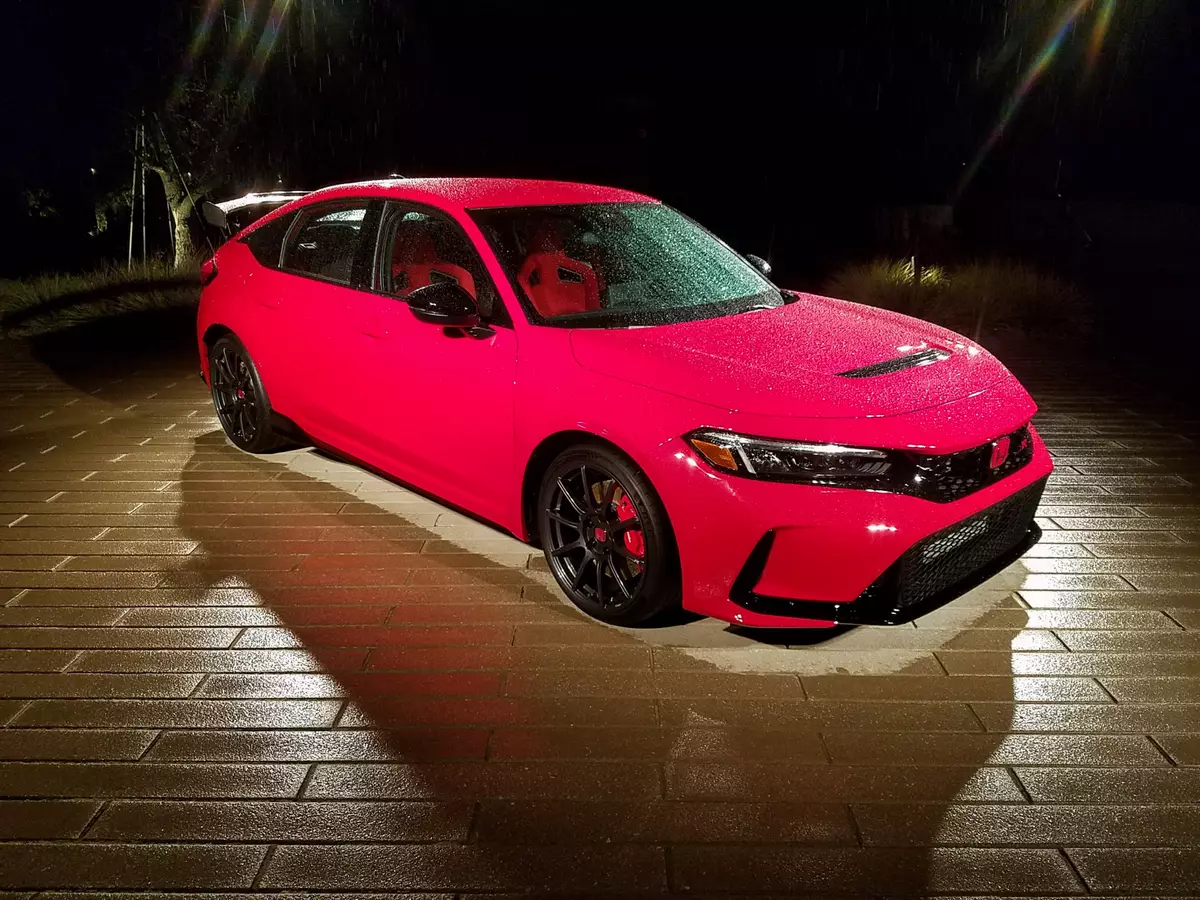
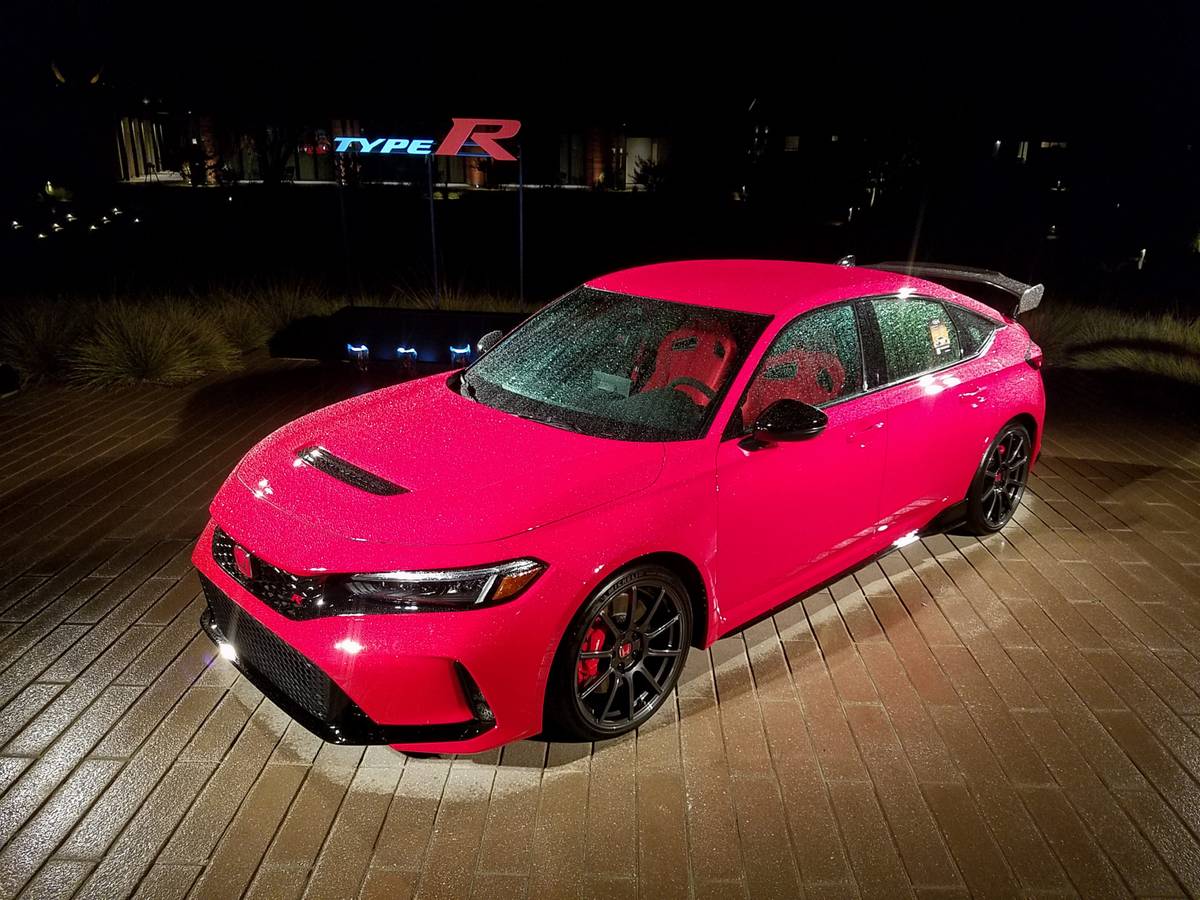

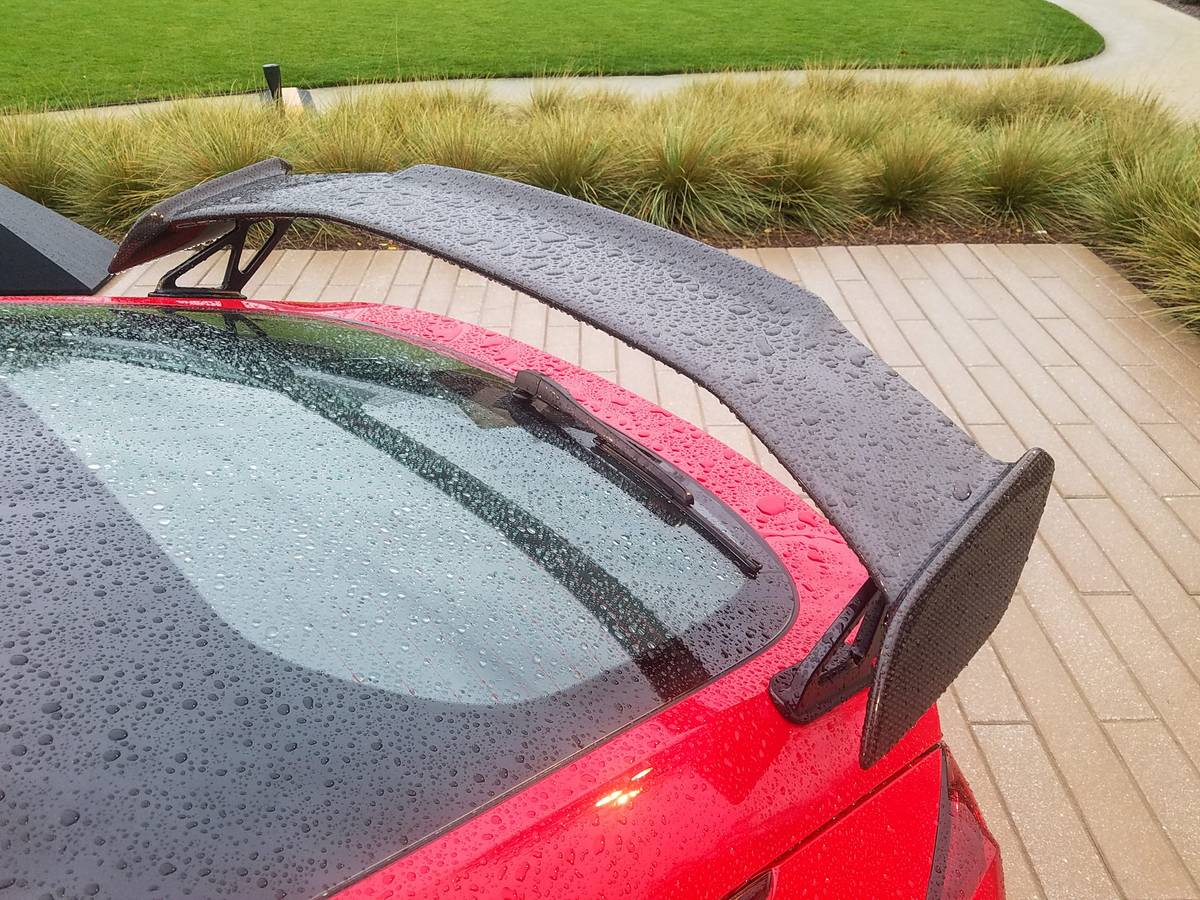





As with the previous Type R, a large rear wing is part of the package. It has aluminum stanchions and, thankfully, is positioned so that it doesn’t interfere with the view out the rear window — it sits just below the top of the window opening, above the driver’s sightline. A carbon-fiber wing is available as an accessory option.
More From Cars.com:
- 2023 Honda Civic Type R Tracks in 315 HP, Tech Upgrades
- 2023 Honda Civic Type R Breaks Cover in Official ‘Spy Photos’
- 2021 Honda Civic Type R Limited Edition Review: A Little Bit Lighter, a Little Bit Louder
- Which New Cars Have Manual Transmissions?
- Research the 2023 Honda Civic Type R
The Bottom Line
Like its predecessor, the new Civic Type R is essentially an all-in, mono-spec offering — it comes in a single well-equipped trim level with everything standard. The Civic Type R is arriving at Honda dealers now, with a starting price of $43,990 (all prices include destination). The only factory option is exterior color, and there are just five of those: Crystal Black Pearl and Rallye Red are no extra cost; Boost Blue Pearl, Championship White and Sonic Gray Pearl are $395.
That’s still a serious jump over the $38,910 sticker of the regular-edition 2021 Type R, but it’s comparable to a few of the Type R’s key competitors: The redesigned-for-2022 Volkswagen Golf R, starts at $45,385, and the new-for-2023 Toyota GR Corolla starts at $43,995 in comparably equipped Circuit Edition trim. Both of those rivals have all-wheel drive, which the Type R doesn’t offer, and the GR Corolla also comes as a pared-down Core model that starts at a more accessible $36,995. The delightful Hyundai Elantra N is more affordable still and starts at $33,745. Its 276-hp, turbo 2.0-liter four-cylinder gives up 39 hp to the Type R, but the N offers a similar roster of track-focused enhancements that make it a hoot to drive as well.
Given the realities of today’s new-car marketplace, where trucks and SUVs are the dominant body style, it’s a happy development that performance enthusiasts have this many solid hot-rod compacts from which to choose — and all of them are invigorating to drive and cost less than the current average transaction price of a new vehicle.
Related Video:
Cars.com’s Editorial department is your source for automotive news and reviews. In line with Cars.com’s long-standing ethics policy, editors and reviewers don’t accept gifts or free trips from automakers. The Editorial department is independent of Cars.com’s advertising, sales and sponsored content departments.

Senior Research Editor Damon Bell has more than 25 years of experience in the automotive industry, beginning as an Engineering Graphics researcher/proofreader at model-car manufacturer Revell-Monogram. From there, he moved on to various roles at Collectible Automobile magazine and Consumer Guide Automotive before joining Cars.com in August 2022. He served as president of the Midwest Automotive Media Association in 2019 and 2020.
Latest news
